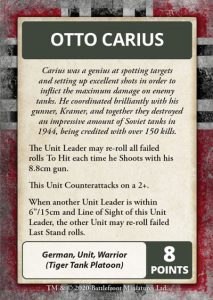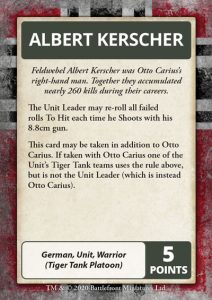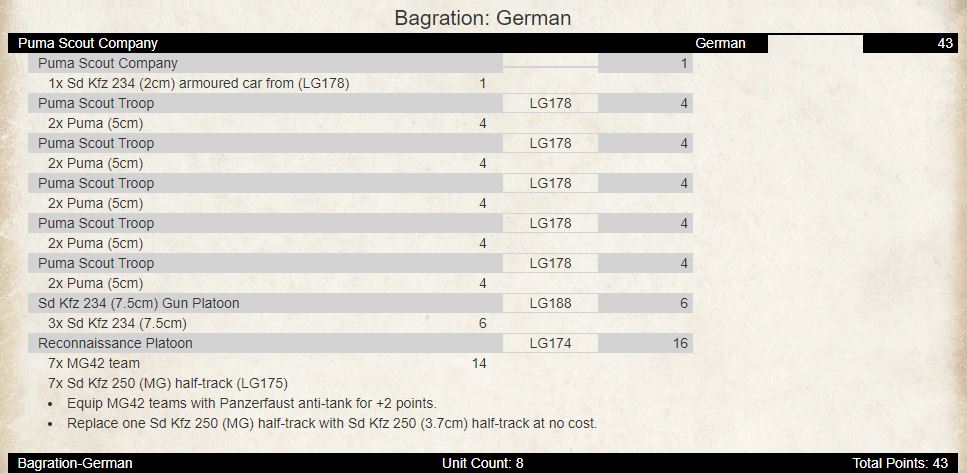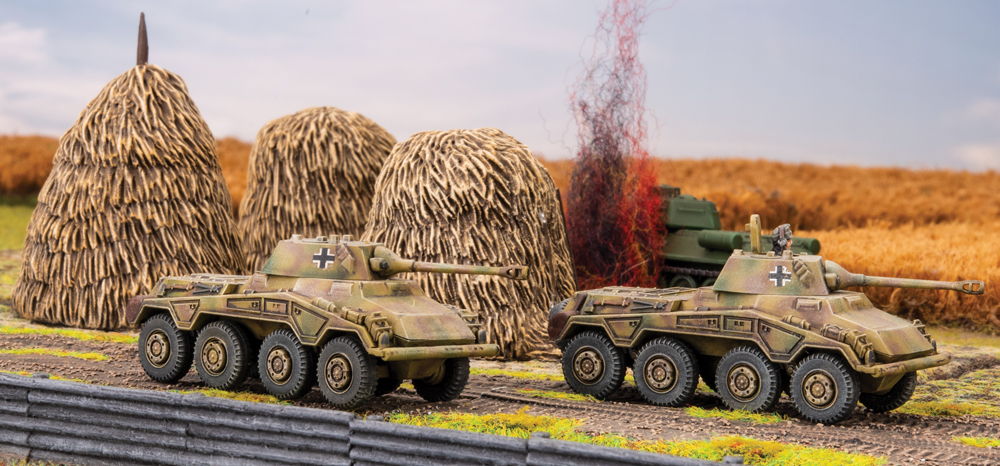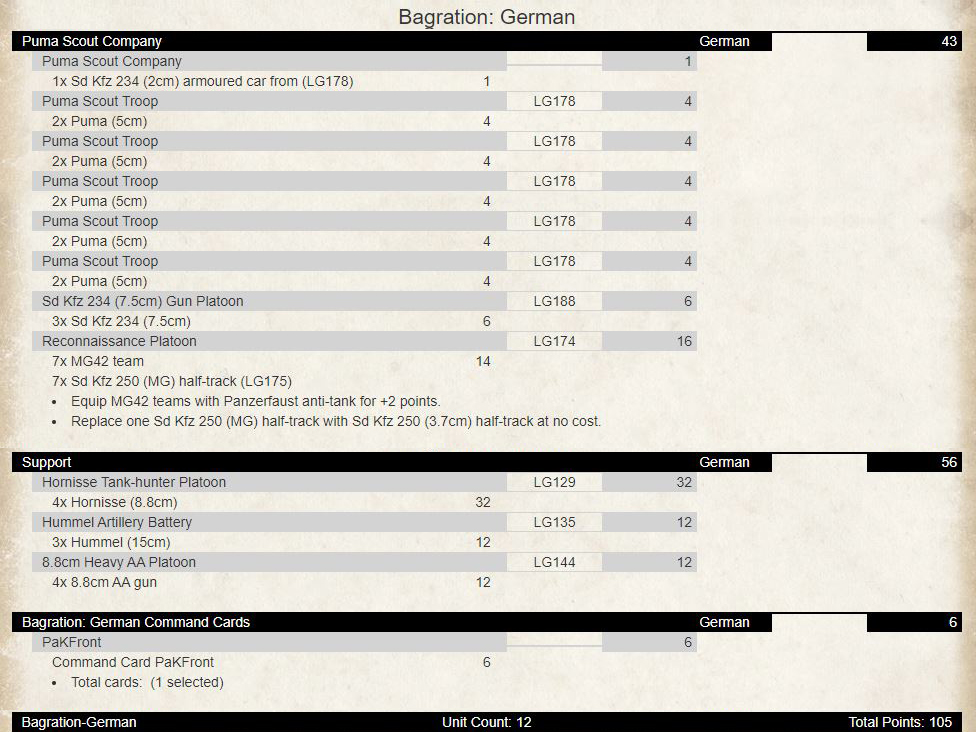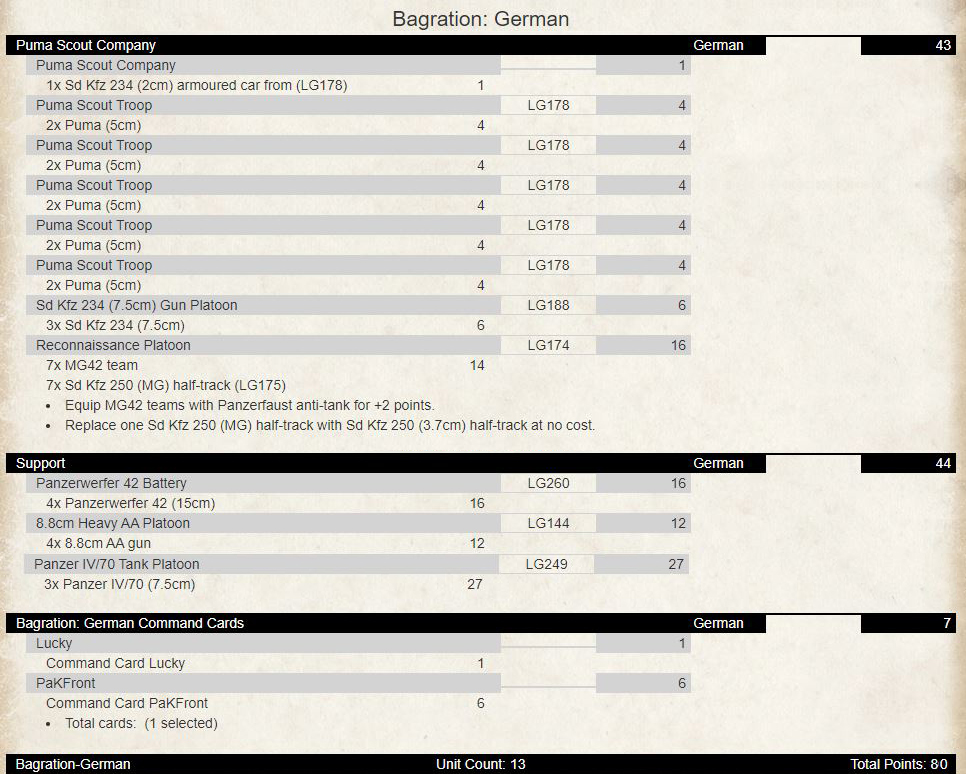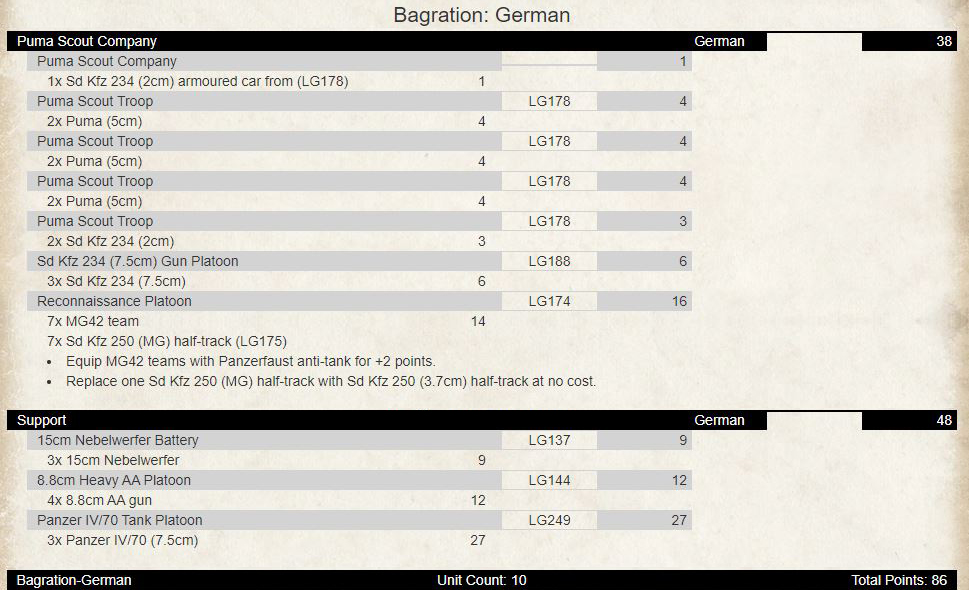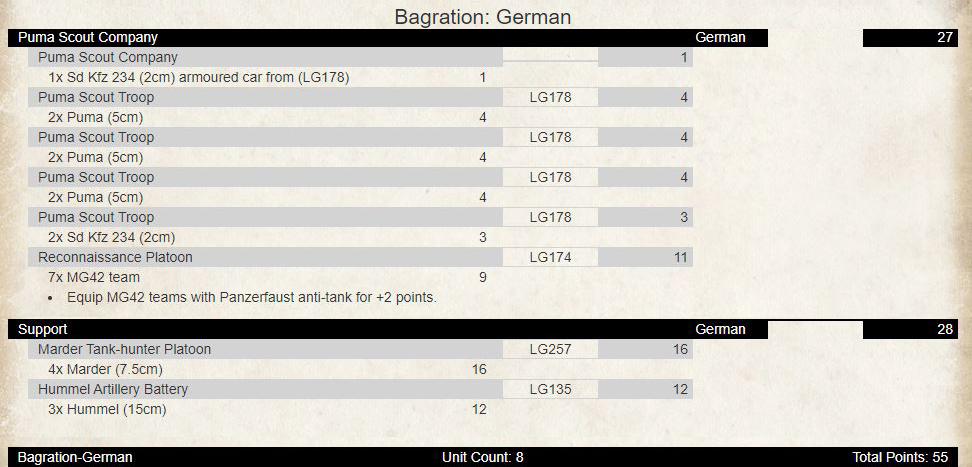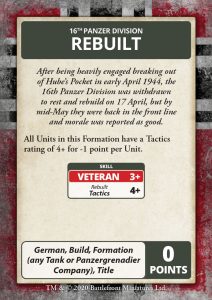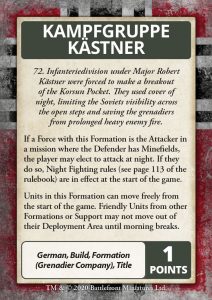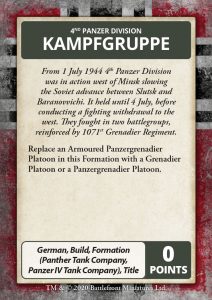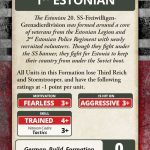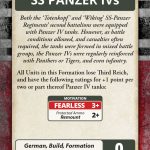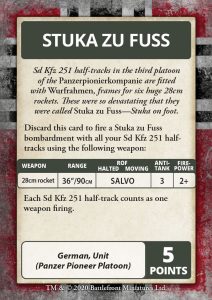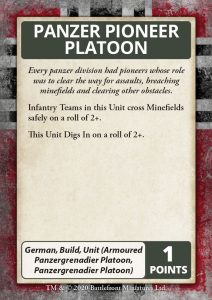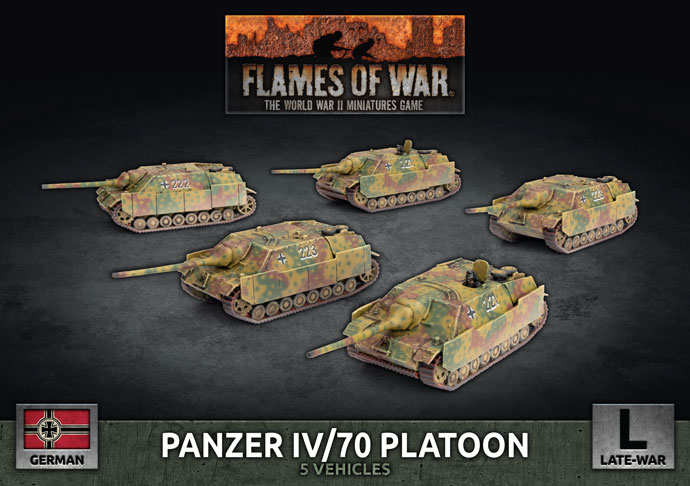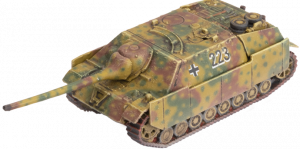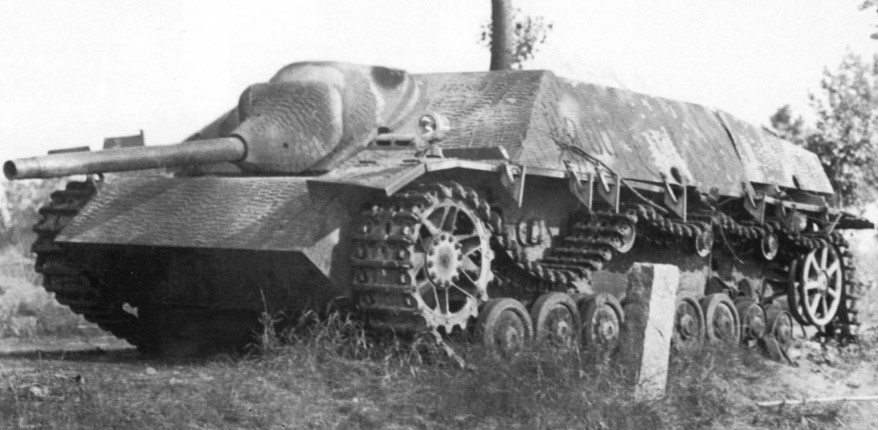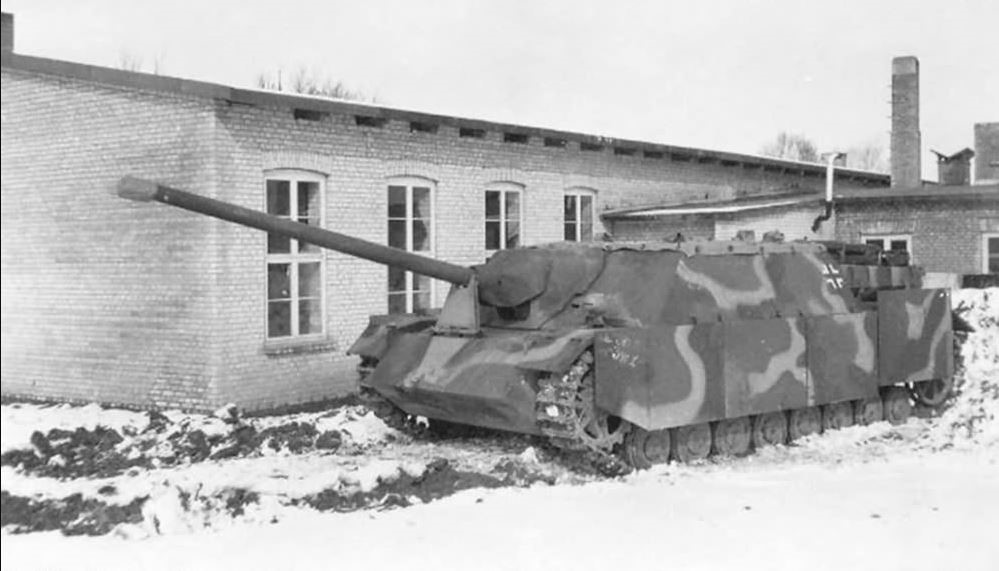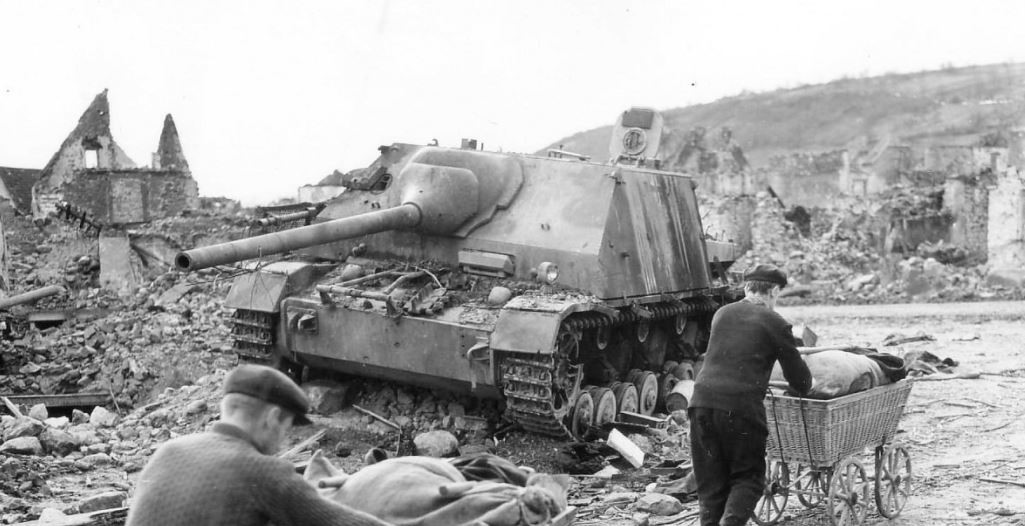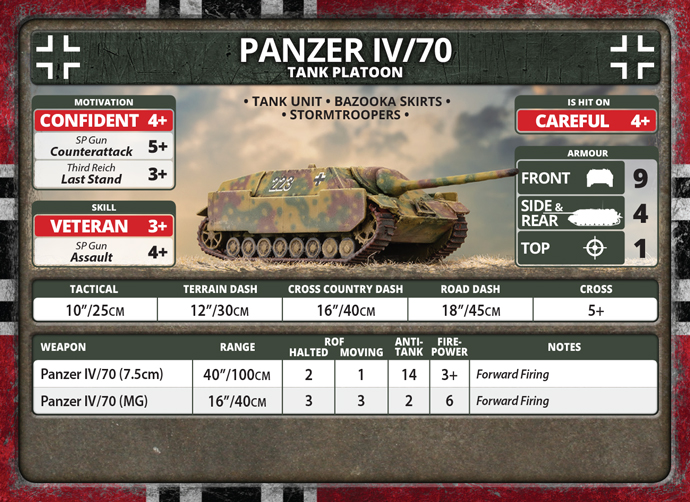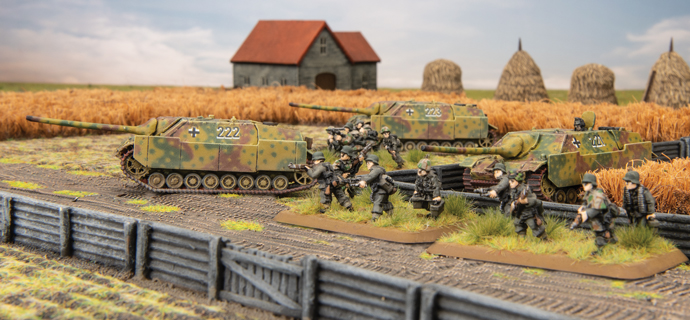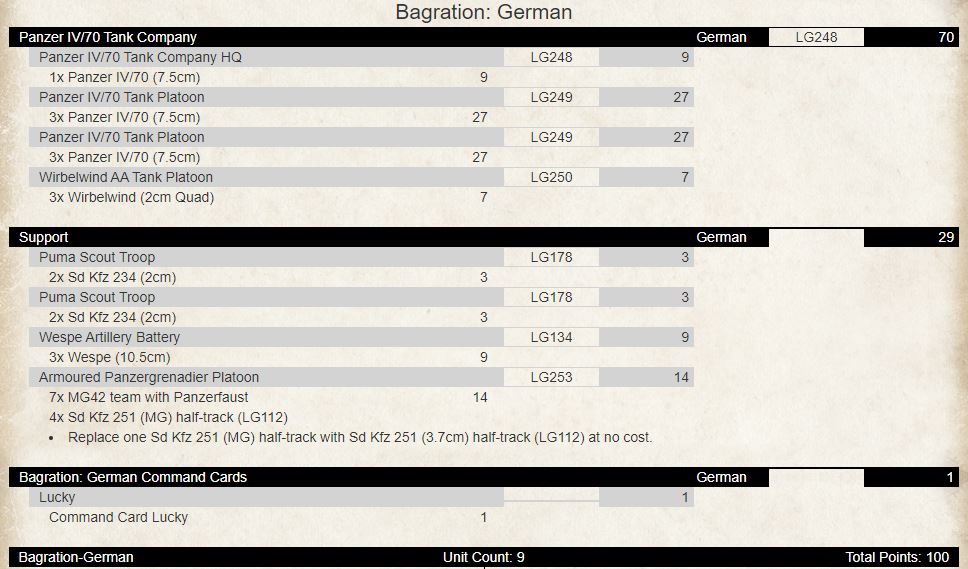Rapid Fire Assaults! The German Escort Platoon in Flames of War
With Joe Saunders
Early on in World War II, Soviet commanders started attaching units of infantry, primarily armed with sub-machine guns to their tank forces. These troops became known as tank riders because they often rode on top of the tanks into combat. This allowed them to use the increased mobility, and partial protection to get them to the hot spots in the fight. The tanks in turn benefitted from this by having infantry support close at hand to ward off any enemies that came too close. As often is the case, any successful idea usually gets copied and the German forces soon duplicated this approach with the Begleit, escort tank riders. These tough soldiers rode into battle on the fearsome StuG Assault Guns and were heavily armed with the new StG 44, the first true assault rifle. With the launch of the new Bagration: German book, these troops can now be added to your Axis forces in Flames of War. In this article we will take a closer look at these unique and powerful warriors and discuss how you could build a 100 point force around them.
The Stats:
At first glance, you will notice that the Escort Platoon boasts the same excellent stats as most German infantry. A Hit On Value of 4+, Motivation of 4+ and 3+ Last Stand are the hallmarks of German infantry and any Axis player will know this well. But on top of these solid stats, the Escort Platoon has a few additions. True assault infantry has been absent from German formations since Mid-War, so the Escort Platoon is a welcome addition. Not only do they have the StG 44 assault rifle which functions as a range 8” submachine gun, but they also have an assault rating of 2+! Few units compare to this power in close combat and should strike fear into your opponents. To make the unit even more formidable it comes in platoons of either 7 or 10 stands. These are very large unit sizes for Axis players. It is staggering to think that an Escort Platoon could make a tactical move, fire up to 30 times then charge into an assault, hitting on a 2 plus, all in one turn. Lastly, and most importantly, the platoon has the Tank Escorts special rule that allows the unit to charge straight into assaults from the StuGs or StuHs they are riding on.
Weaknesses:
You have to take the good with the bad and the Escort Platoon has a few drawbacks that need to be discussed. In exchange for its considerable advantages, the unit takes a hit in the form of points cost and flexibility. At 13 points for 10 stands the escort platoon is simply a very expensive unit to include in most army compositions. Additionally, they are not a black box choice so in order to take them you have to commit to taking an entire Assault Gun formation. This makes the entire army’s composition very predictable and the assault guns, though good, might not be the first choice for most players in Late War (where their FA of 7 and AT 11 gun are pretty average). The Escort Platoon has no upgrades to add additional weapons such as Panzerschreks or Panzerfausts. This means that the Escort Platoon will be extremely effective against infantry but won’t be assaulting enemy armour except in the most desperate circumstances. Lastly, in Flames of War, most assault troops have access to Flamethrowers and the Escort Platoon does not. This means that when you are attacking opponents in buildings or foxholes, chances are most of the damage you will be dealing will be based on your 2 + assault rolls, not your preparatory shooting. An astute commander will need to rely on the synergy between the nearby assault guns and his Begleit troops when enemy infantry is well prepared or there is substantial armour nearby.
Army Composition:
As detailed above, adding an Escort Platoon to your force requires the addition of a StuG Assault Gun formation making army composition fairly static. This however this does not make the army weak as the StuG is still a fairly solid choice in Late War. Here is a sample army I would consider fielding:
Tactics
This list tries to achieve some balance while maximizing the use of the Escort Platoon. The main strategy would be based on aggression. Choosing to attack whenever possible. This way the Wespes can lay down smoke to cover the advance of the StuG, and the StuHs are available to handle dug-in units. The Tigers are there to deal with any serious high armour opponents may have while the Quad Halftracks ward off aircraft and guard objectives (along with the Wespes). Once the Assault Guns are close to their targets they can unleash the Escort Platoon straight into the assault using the Tank Riders Rule. From here the Escort Platoon’s high rate of fire and 2+ assault value can be used to maximum effect. In the event that this force must take reserves, holding the Tigers and one Assault Gun platoon back uses exactly 40 points.
Prepare for Action:
Hopefully, this article has provided you with some ideas of how to use the Escort Platoon in your games of Flames of War. Being a totally brand-new type of infantry that German players have not had access to before, makes these troops a new challenge and fun option that both Axis and Allied players alike will have to adapt to. Now it is time to get your copy of Bagration: German, load up on StG 44s, and ride into battle!
Join Us On Twitch the Bagration: German Q&A with Wayne
Join us on Twitch as Wayne goes over the questions we’ve already received and as he answers questions from the chat!
Building a Bagration German Half-Track Scout Company
With John Lee
For those who have read any of my previous articles, you will know that I have an affinity for reconnaissance formations. I had written the article for the Waffen-SS Half-Track SS Scout Company and the D-Day: German variant. To round it out I thought I would look at the Bagration; German variant of the list, examine the differences, and see what new support options we can take now with this formation.
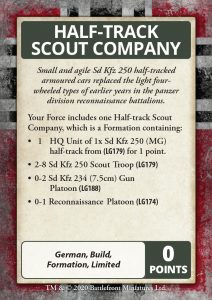
- 1 HQ Unit
- 2-8 Sd Kfz 250 Scout Troop
- 0-2 Sd Kfz 234 (7.5cm) Gun Platoon
- 0-1 Reconnaissance Platoon
This is identical to the D-Day variant in terms of the number of units. The Waffen-SS variant is different, in that it has only one Sd Kfz 234 (7.5cm) Gun Platoon. Looking at the makeup of this formation, we can take three to twelve platoons making it a strong formation if you wish, with built infantry and useful AT9 FP 3+ guns to support your half-tracks. Being Heer, they are also rated as “Careful” meaning hit on 4+, best armour you can get! Add in your scout platoon’s scout ability, which means they will be hit on 6s at close range if you are concealed and did not shoot whilst still moving into position! Now the scout troops have three vehicles in the platoon, lightly armed with a 2cm gun and MGs but useful to get a strong formation on the table, allowing us to look at taking some of the cool new toys in this release.
After exploring the core formation below, we will look at options for 105pt, 80pt, and 55pt lists.
I do not normally max out all the platoons – I feel that taking 4-6 Scout Troops, 1-2 Gun Platoons and the Reconnaissance Platoon is enough to keep the formation from breaking thus freeing up more points on the new kit. Looking below we spend 35pts on getting this core formation solid.
This is a core 35pts for the 105pt and 80pt lists. Looking at the 105pt list first, we now need to look at what support options could be taken. With the ability to choose from Bagration: German, D-Day: Waffen-SS, or D-Day: German black box units, you can mix and match what you want to suit your playstyle. Support options need to be taken from the Bagration: German chart. For this article, I will be looking at taking some of the new equipment for this release.
So, let us look at what we need to consider from a support perspective for this list. They should be supported by tanks, high-end AT, artillery, and what we need to cater for around reserves. With 70pts left to play with, I want to build a mobile reserve unit that can come in and shoot at an opponent at maximum range and have the armour to withstand any return fire. This means either the Panzer IV/70 or Elephant. I think for this list we should take the Elephant. FA16 with AT17 gun with 48” range fits the bill. Three of these costs 43 pts. Can also assault if required on 4s. You can put these in reserve by themselves. I want to take some Flak 88s with Pak Front for 18pts to provide some heavy AT capability across the table if my Elephants are in reserve. Some Nebelwerfers for 9pts to provide some suppression indirect fire. A sample list could look like this:
I like this type of force and suits my play style. Lots of small units running around with four AT14 guns in nests spread across the table supported by infantry that can either attack or defend with tank hunters, that can come in from reserve or dominate the table and nebs to keep infantry pinned down in their foxholes. Another option would be to change out the Elephants with four Panzer IV/70 Tanks – AT14 and FA9 and change out the nebs for the new Panzerwerfer 42 Armoured Rocket Launchers. This is how it could look:
For an 80pt list we would change it out a bit by replacing the Elephants (list 1) with three Panzer IV/70s, making artillery nebs (list 2), dropping a scout troop, and removing the gun platoon:
You could take replace the Pak Front command card and reinstate the gun platoon to increase the formation to six units.
For a 55pt game, this is where recon unit lists shine – more flexibility with smaller points than other formations. Still want to take tanks, infantry, artillery:
Downgrade the Panzer IV/70s to Hetzers and you still have nebs (you could change these out to Wespes) and still a strong formation that can take on your opponent with a combined arms approach.
This command card formation with the new equipment can provide some interesting new options. I hope this has given you some food for thought. Happy list building!
Preparing the Big Guns: My Paint Scheme for Bagration: German
With Joe Saunders
With the launch of the new book Bagration: German I decided it was time to update my Axis colour schemes to something suitable for the Late War time period. I also decided that it would be appropriate to start with some PaK 43s, since the Soviets are currently bringing a lot of heavy armour to the game. I figured the Late War 88 punching out 2 AT 17 shots a turn would be a good place to start and an easy way to show my opponents that the German army is not out of the fight yet.
To come up with this paint scheme I tested it a few times on some spare models until I felt I had it right. Then I recorded the process and colours in a notebook I keep at my painting desk. You should always keep a record of your paint schemes so you can go back and reproduce them at a later date. I had to learn this the hard way. (I have no clue how I got my D-Day American force looking the way it does and every new unit I add is just a little off because I failed to write the details down!)
Materials:
Before any painting project, I gather the necessary materials and ensure I have them in proper quantity. (Nothing is as frustrating as running out of paint halfway through a project!). This is what I used for this project:
| Airbrush & Compressor | Vallejo Model Air Black Primer | Game Colour Earth Brown |
| Airbrush Thinner | Vallejo Model Air DK Yellow Primer | Vallejo Dark Sea Grey |
| Paintbrushes (All Sizes) | Earth Tone Acrylic Paints | Game Colour Wolf Grey |
| Mig Enamel Thinner | Vallejo Model Air: Ivory Sand | Vallejo Field Grey |
| Testors Rust Wash | Vallejo Model Air: Armour Brown | Vallejo Africa Corps Uniform |
| Water | Vallejo Model Air: Olive Green | Black Acrylic Paint |
| Mig Dark Wash Enamel | Vallejo Model Air: Earth Yellow | Vallejo Light Flesh |
| Acrylic Matt Varnish | Vallejo German Yellow | Army Painter Flesh Wash |
| Acrylic Gloss Vanish | Vallejo Hull Red | Balsa Wood Strip |
| Craft knife | Vallejo Iraqi Sand | Sprue Cutters |
| Plastic Glue | Craft Knife | Hot Glue Gun & Glue |
| Super Glue | Sand Box Sand | Kitty Litter (Clean) |
| 2 pipettes | Rubbing Alcohol |
With the materials gathered It was time to start the project. Below is a step by step to reproduce my method. If you want to use this as a rough guide please do so. If you lack a tool or type of paint all you need to do is substitute something similar.
1. Preparing the Model: Using the sprue cutters, cut the parts of the model and crew off of the sprues. Use the craft knife to remove any flash or scars from the parts. Using the plastic glue assemble the model according to the instructions. At this time, glue the canons to the bases and using the hot glue gun adhere the crew to a strip of balsa wood to make them easier to handle while painting.
2. Primer: Using the airbrush, spray 2 light coats of the black primer on the models and crew
3. Canon Undercoat: Using the airbrush, spray Dark Yellow on the canons focusing on the edges and smooth surfaces and leaving the darker areas showing through in the shadowy areas.
4. Canon Mid-Tone and Highlight: Using the airbrush spray the canons lightly with Earth Yellow leaving it out of the deepest areas. Concentrate on the edges of panels and the upper surfaces. After this, repeat the process with Ivory Sand but keep the pattern confined to only the edges of the canon and anywhere light would fall directly on the model.
5. Camouflage: With the airbrush spray patches of Armour Brown and Olive green onto the canons.
6. Top Highlight and Gloss Varnish: Using a large stiff bristle brush, take some German Yellow straight from the bottle and wipe it off on some paper towel. When there is just a slight amount of pigment left on the brush, drybrush it onto the canons focusing on the edges of the plates and raised details. When this has dried, load the airbrush Gloss Varnish and apply 2 coats to the entire model.
7. Crew Uniforms: While the Gloss Varnish dries, first heavily dry brush Field Grey onto the crew models clothing and helmets. Then follow up with a lighter dry brush of Africa Corps Uniform.
8. Apply Thinner and Wash: Once the gloss varnish is dry take, a large brush and apply enamel thinner over the entire canon model. Then while the thinner is still wet apply the Dark Wash enamel. The Thinner will carry most of the enamel into the crevices and lower areas of the model
9. Clean up Wash and Re-Highlight: Give the wash about 15 min to set then use a flat brush moistened with enamel thinner to remove the wash that has pooled on raised/flat surfaces. Using the brush, you can sweep the wash back into the crevices and the shadows or remove it entirely from raised areas or parts of the model that would be in direct sunlight. Allow the wash to dry then repeat the top highlight dry brush from step 6. Now that the model has been shaded with enamels and varnished, the highlights will be resisted slightly by the underlying layers, keeping the highlights sharp and reducing chalkiness.
10. Crew Details: Now paint the webbing and shells on the crew models Earth Brown and the skin Hull Red.
11. Skin Tones and Crew Highlights: Paint Light Flesh onto the skin areas of the crew leaving Hull Red showing in the recesses. Apply highlights to the webbing and shells with Iraqi Sand. When this has dried, wash the flesh areas and brown areas with Flesh Wash. When the wash dries, Highlight the skin with light flesh on raised areas like the chin and nose.
12. Chipping: going back to the canons, paint small streaks and dots of Light Flesh on the model where wear may occur such as at the corners of the armoured plates. After this dries, stipple dots of Hull Red into the centre of the Light Flesh to look like rusty chips. Now brush the enamel rust wash over the “chips” and when it is dried, clean it up with enamel thinner as in step #9. (Note: with chipping on models in 15mm scale less is more. This effect can be overpowering so use it sparingly to build depth and visual interest.)
13. Finish Crew: Paint the warhead of the shells, boots and gasmask canisters black. Follow this by applying Dark Sea Grey to the warheads and cannisters leaving the black in the recesses showing. After this has dried, make a fine highlight with Wolf Grey. Next mix Wolf Grey with Africa Corps uniform in a ration of 1:3 and with a fine brush, highlight any raised areas on the uniform and make sure to do the rim and top of the helmets. Finally, you can now use superglue to adhere the crew to the gun bases.
14. Texturing the Bases: Using an old brush spread a mix of 8 parts white glue to 2 parts water on the base. Next sprinkle this with a mix of kitty litter and sand and shake off any excess.
15. Fixing the Grit: While the glue is still wet, use a pipette and deposit a mix of 3 parts rubbing alcohol to 1 part black acrylic ink onto the base. Drop the mixture until the grit is coated and the capillary action draws the mixture into the crevices around the model. Next while everything remains wet, mix 8 parts water to 2 parts white glue and using a different pipette, layer this on top of the grit mixture. The rubbing alcohol will break the surface tension and everything will flow together to form a strong bond. Leave this overnight to dry.
16. Finishing the Base: When the grit has dried, dry brush various shades of dark and light brown onto the base working from dark to light. Then paint the rim of the base brown (Use 2 coats). When this has dried you can use watered down white glue to attach lichens and static grass. Finally, when all of the glue has dried, use an airbrush to spray on 2 layers of matt varnish.
The Models are Now Complete
I hope this process gives you ideas for preparing your models for the launch of Bagration: German. With the sheer variety of paints and techniques for model painting available it is extremely unlikely that you will have the same products to achieve identical results as I have, but the challenge with the hobby is not to duplicate the work of others but travel your own artistic path. So, go ahead and create some exciting and unique paint schemes for your models then grab an opponent and get playing Flames of War!
Tigers in the Mud Otto Carius on the Eastern Front, 1942-1944
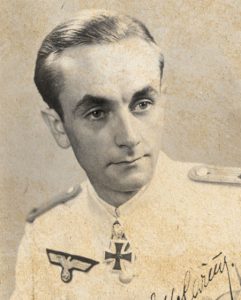
On the Leningrad Front, 1941-42
The 21st Panzer Regiment was equipped with the Czech-made Panzer 38(t). Otto Carius served as the tank’s loader in the 10th Panzer Company. When Carius and the rest of his crew received its first Panzer 38(t) tanks they were excited.
The tank was fast, manoeuvrable and they felt the armour would protect them from anything the enemy could throw at them. However, as Carius noted, ‘We were enthusiastic about the armour protection and didn’t realize until later that it would only serve as moral protection for us. If necessary, it would stop small arms fire’.
Only a month into the Russian campaign, Carius’ tank was hit and the crew had to bail out for the first time. A disillusioned Carius wrote, ‘We cursed the brittle and inelastic Czech steel that gave the Russian gun so little trouble. The pieces of our own armour plating and assembly bolts caused considerably more damage than the shrapnel of the round itself’. Carius was hit in the face, losing several teeth in the process. He recovered at an aid station and hitchhiked his way back to the front.
In early August 1941, Carius was promoted to Unteroffizier and received orders to report to the 25th Panzer Replacement Battalion to begin officer training. In February 1942, Carius failed to meet the qualifications for officer and was returned to the 21st Panzer Regiment. He was given command of a Panzer platoon, but the regiment only had enough tanks to equip a company, so his platoon had to fight as infantry until they received new Panzer 38(t) tanks. Carius and the rest of the 10th Panzer Company finally received replacement tanks and joined the fight once again.
During the fighting in the early summer of 1942, the regiment received its first Panzer III and IV tanks, which helped even the playing field against the tough new Soviet T-34 tanks. For his combat experience and leadership Carius was promoted to Leutnant and served as the commander of the battalion’s pioneer platoon.
Carius and his Tiger
In January 1943, Carius was transferred to the 500th Replacement Battalion. When he arrived, he discovered that the battalion was formed exclusively from Eastern Front Panzer veterans to train on the new Panzer VI Tiger heavy tank. His excitement was somewhat curbed when he was assigned to run the officer’s club instead of taking command of a Tiger. Nevertheless, Carius went to work and met Hauptmann Schober, commander of the 2nd Company.
Carius kept him well supplied with French vermouth and Schober saw to it that Carius was reassigned to his company. Soon there after the battalion was renamed the 502nd Heavy Panzer Battalion, and Carius was given command of a Tiger from the 2nd Heavy Panzer Company.
After a short stay in France, where the crews became acquainted with their new tanks, the company was dispatched to the Leningrad sector on the East Front. Carius and the rest of the company first saw action in July 1943 and fought for eight straight weeks.
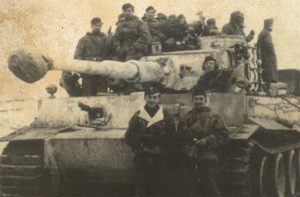
During the fighting Carius’ gunner had an amazing stroke of luck. Carius wrote, ‘My gunner, Unteroffizeier Kramer, can take credit for a deed that was probably unparalleled on the Eastern Front. That is, he succeeded in shooting down a Russian fighter with a tank cannon … Kramer, upset by the unrelenting nuisance of these guys, elevated his cannon along the approach route. I talked him in. He took a chance and pulled the trigger. On the second attempt, he hit one of the ‘bees’ in its wing. The Russian crashed behind us’.
Narva
The 2nd Company, 502nd Heavy Panzer Battalion was then ordered to reinforce the front with the 11th ‘Nordland’ SS-Freiwilligen Panzergrenadier Division at Narva. Carius fought hard and as a result won the Knight’s Cross in recognition of his efforts on 4 May 1944.
In Narva, Carius had assumed default command of the company. Oberleutnant von Schiller was officially in command but lacked the respect of the rest of the company. Von Schiller often shrugged off operations onto Carius who picked up the slack and commanded the company in his stead.
In Dünaburg
In June 1944, Carius and the 2nd Heavy Panzer Company were transferred to Dünaburg to fend off the Soviet offensive against Army Group North. The Soviets managed to outflank the German defensive lines further south during Operation Bagration aimed at destroying Army Group Centre. The renewed Soviet assault in the north intended to take the port city of Riga.
On 22 July 1944, Leutnant Carius with his company of eight Tigers advanced towards the village of Malinava, north of Dunaburg, to halt the Soviet advance. Carius and Feldwebel Albert Kerscher took a Kübelwagen to recon the village. They found the Soviets had arrived in the village. Carius knew that the force in the village was only the vanguard, waiting for the rest of the Soviet force to arrive. He knew that this was the critical time to attack and recapture the village before the reinforcements arrived.
Carius attacked the village using two Tigers and kept the six remaining Tigers in the reserve. There was only one road leading into the city and attacking with the entire company would create a dangerous bottleneck. Carius led the attack in his Tiger and Kerscher’s Tiger followed close behind.
Surprise and speed were critical to Carius’ plan. When Carius’ Tiger was about to enter the village, two T-34/85 tanks were observed rotating their turrets. At that moment, Kerscher fired and knocked them out.
Then Carius noticed a strange tank ahead of him and for a second he thought he was facing a captured King Tiger. However, he quickly reidentified the target as one of the new Soviet IS-2 heavy tanks. He opened fire and catching the heavy tank in the flank. The Soviet tank exploded into a ball of flame.
The two Tigers went on to cause havoc within the village, knocking out 17 Soviet tanks in 20 minutes. Carius received Oak Leaves for his Knights Cross for his involvement in and around Dünaburg.
 A Brush with Death
A Brush with Death
On 24 July 1944, Carius dashed ahead of his tanks in a motorcycle and sidecar on a reconnaissance mission, as he often did prior to a mission. No sooner had he got out of his motorcyle than he and his driver were ambushed by Soviet troops, suffering shots through the leg and arm, as well as four bullets in the back.
Carius tried to draw his weapon with his one healthy arm, but was stopped by a Russian officer who was aiming his pistol at Carius’ head. Just as the Russian pulled the trigger, Carius turned his head and the shot went into his neck.
As Carius faced death, the Tiger tanks from Carius’ company stormed onto the scene in a sort of Hollywood-style rescue operation. The Russians were scared off and Tigers stopped to help Carius. They bandaged him up and stopped the bleeding from his leg using Carius’ elastic suspenders. They put him on the back of one of the Tigers and Carius clung to the turret for dear life.
Suddenly, the Russians opened fire again. Carius stood up on his good leg and yelled at the tank commander, telling him were the fire was coming from. However, as the turret turned, Carius’ foot was jammed in between the turret and the hull.
Now completely exhausted and only one functional limb, Carius was taken to a field hospital where he was treated and made a full recovery after cheating death.
Otto’s Finale
In August 1944, Carius was transferred to the newly created 512th Heavy Tank-hunter Battalion where he received the command of the 2nd company newly equipped with the powerful new Jagdtigers.
This 72-ton tank hunter was armed with a 128mm Pak44 L/55 gun. Despite its size and powerful gun, Carius hated it. He didn’t like that it was exteremely slow, had poor manoeuvrability, and used a weak transmission. Since it was an assault gun, Carius also lamented the loss of a turret. Overall, Carius was not impressed.
The company was called into action in March 1945, without finishing its training. Carius fought in the Ruhr Pocket, before surrendering to the US Army on 15 April 1945.
After the war, Otto Carius became an owner of a pharmacy called the Tiger Apotheke. He remains the highest scoring tank ace alive today, with well over 150 kills to his credit
Otto Carius in Flames Of War
The Command Card (to the left) represents Otto Carius during 1944 when he was fighting in his Tiger I E heavy tank supporting Army Group Narva. You can also field Carius’s right-hand man, Feldwebel Albert Kerscher.
Otto Carius and Albert Kerscher may join a Tiger Tank Company from Page 30 of Bagration: German.
Building a Bagration: German Puma Company
With John Lee
For those who have read any of previous articles, you will know that I have an affinity for reconnaissance formations. I had written the article for the Waffen-SS Puma Scout Company and the D-Day: German variant. To round it out I thought I would look at the Bagration: German variant of the list, examine the differences and see what new support options we can take now with this formation.
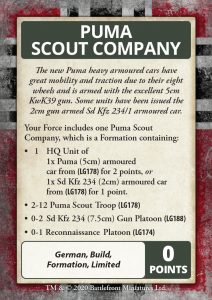
- 1 HQ Unit
- 2-12 Puma Scout Troop
- 0-2 Sd Kfz 234 (7.5cm) Gun Platoon
- 0-1 Reconnaissance Platoon
This is identical to the D-Day variant in terms of the number of units. The Waffen-SS variant is different, in that it has only one Sd Kfz 234 (7.5cm) Gun Platoon and can only take almost half of the Puma platoons. Looking at the make of this formation, we can take three to sixteen platoons making it a strong formation if you wish, with built infantry and useful AT9 FP 3+ guns to support your armoured cars. Being Heer, they are also rated as “Careful” meaning hit on 4+, best armour you can get! Add in your scout platoon’s scout ability which means they will be hit on 6s at close range if you are concealed and did not shoot whilst still moving into position! Now, the scout troops have only two vehicles in the platoon, making them a bit brittle and will need some careful handling. You have two options for each of these two vehicle platoons. The lightly armed Sd Kfz 234/1 with 2cm gun for three points a platoon or the Iconic 5cm armed Sd Kfz 234/2 Puma for four points a platoon, however still useful to get a strong formation on the table, allowing us to look at taking some of the cool new toys in this release.
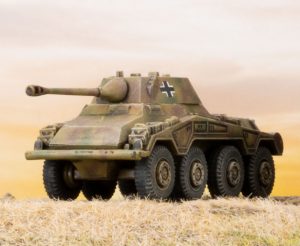
This is a core 43pts for the 105pt and 80pt lists. I would reduce the core list further for the 55pt option covered further below. Looking at the 105pt list first, we now need to look at what support options could be taken. With the ability to choose from Bagration: German, D-Day: Waffen-SS or D-Day: German black box units, you can mix and match what you want to suit your playstyle. Support options need to be taken from the Bagration: German chart. For this article, I will be looking at taking some of the new equipment for this release.
So, let us look at what we need to consider from a support perspective for this list. They should be supported by tanks, high end AT, artillery, and what we need to cater for around reserves. With 62pts left to play with, I want to build a highly mobile reserve unit that can come in and shoot an opponent’s armour at maximum range. Let us take four Hornisse with AT17 and 48” range for 32pts. You can put these in reserve with the gun platoon and a Puma platoon. I want to take some Flak 88s with Pak Front for 18pts to provide some heavy AT capability across the table if my Hornisse’s are in reserve. Add some artillery in the form of three Wespes and an OP to round out the points. A sample list could look like this:
I like this type of force and suits my play style. Lots of small units running around with four AT14 guns in nests spread across the table supported by infantry that can either attack or defends with tank hunters, that can come in from reserve or dominate the table and Hummels to keep infantry pinned down in their foxholes. Another option would be to change out the Hornisses with three Panzer IV/70 Tanks – AT14 and FA9 and change out the Hummels for the new Panzerwerfer 42 Armoured Rocket Launchers. This is how it could look:
For an 80pt list we would change it out a bit by replacing the Hornisses (list 1) with three Panzer IV/70s, making artillery nebs instead of Hummels or Panzerwerfers, downgrading a Puma Scout Troop, removing a scout troop and the gun platoon:
You could take replace the Pak Front command card and reinstate the gun platoon to increase the formation to six units.
For a 55pt game, this is where recon unit lists shine – more flexibility with smaller points than other formations. Still want to take tanks, infantry, artillery:
Downgrade the Panzer IV/70s to Marders and replace the nebs with Hummels, remove the infantry’s transports, and still a strong formation that can take on your opponent with a combined arms approach.
This command card formation with the new equipment can provide some interesting new options. I hope this has given you some food for thought. Happy list building!
Bagration: German Command Card Previews
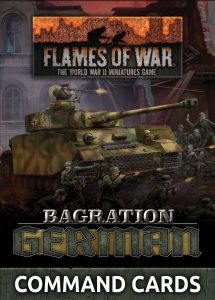
As you might expect, the Bagration: Germans have many of the same Command Cards as other nations like Softskin Transport, Lucky, etc. However, you will also find a great variety of cards for Warriors, Unit and Formation builds, as well as cards that enhance a particular part of your Forces capabilities. You will find plenty of flavourful cards as well to give your force a feel all of its own.
Order your Bagration: German Command Cards here…
(Click on the images to see a larger version)
As an example, there are a number of different Divisional theme cards. Some do simple things like the 4th Panzer Division Kampfgruppe card that lets you field a Grenadier or Panzergrenadier Platoon instead of an Armoured Panzergrenadier Platoon in a Panther Tank Company or Panzer IV Tank Company. Others modify the ratings like the 16th Panzer Division Rebuilt card which drops their Tactics rating to 4+ for -1 point per Unit. The Kampfgruppe Kästner card allows a Grenadier Company to conduct a night attack in the right circumstances.
There are even cards for making a couple of Waffen-SS options. There is a series of cards for making your armoured troop represent the 3rd and 5th SS-Panzer Divisions, upgrading their motivation to Fearless. For something a little different, you can take the 20th SS-Volunteer Grenadier Division 1st Estonian. This card lets you field a Grenadier Company rated Fearless Trained Aggressive with Tactics 3+.
There are also a number of Unit build cards Panzer Pioneer Platoon that converts your Armoured Panzergrenadier Platoon into pioneers. To go with this is the Stuka Zu Fuss card that fits heavy rocket launchers to your Panzer Pioneer’s Sd Kfz 251 half-tracks.
Bagration: German Showcase
Panzer IV/70 Tank Company – A Dangerous Duck
With Adam Brooker
The idea for the Panzer IV L/70, or Jagdpanzer IV/70, was for it to be the successor to the very successful Sturmgeschütz III (StuG III). The StuG III was an infantry assault gun that was initially designed and implemented to support infantry in assaulting dug in positions, but when pushed into the role of a tank destroyer proved very effective, due to its low profile and when upgraded with a 7.5cm StuK 40 L/43 and L/48 cannon, it could penetrate the T-34 and Sherman frontally at ranges in excess of 1000 meters.
In 1942 the initial specifications for the tank destroyer based on the Panzer IV chassis (to reduce the number of different vehicles being produced) as a casement-style turretless tank destroyer, with 100mm of armour frontally, with 40 to 50mm on the sides, and to mount the excellent 7.5cm L/70 gun that the Panther was using so successfully. It was also to have as low a profile as possible, similar to the StuG III previously, which was excellent for ambushes. VoMAG was successful in using an almost unaltered Panzer IV chassis in their design and it was accepted, with a mild steel version submitted for the Fuhrers approval in late 1943.
During the design phase it was found that 100mm frontal armour specified was not practical, so an angled 60mm of armour was used instead, and after about 300 vehicles were produced in May 1944, this was increased to 80mm of armour which gave approximately the same level of protection. The frontal armour was also made of interlocking plates welded together to also make production easier and faster.
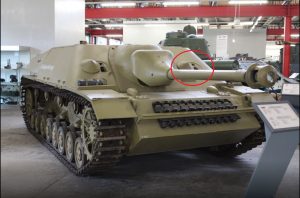
It was also noted that initially little or no consideration was given to how the extra weight of the much longer gun would affect the driving characteristics of the Panzer IV chassis, as Hitler had ordered it to go into production immediately and it seemed bad things happened to people who did not follow the Fuehrer’s demands immediately! (unreasonable or not…)
It had the effect of making the tank destroyer very nose heavy, especially when combined with the additional front armour that was also specified in the design. To further reduce this weight at the front, the spare track links which were originally stored at the front like the Panzer IV were moved to the rear. But overall this weight made them less mobile and very difficult to operate in rough terrain, and crews gave it the nickname “Guderian’s Duck”, poking fun at the General that was given a vehicle he did not want or felt was needed.
Heinz Guderian was the Inspector General of Armoured Troops at the time, and an early advocate of the Blitzkrieg style of warfare the Germans employed successfully in Poland, France, and Russia, and was very against yet another conversion of a successful design. He felt it diverted resources away from the production of the Panzer IV, and it was not needed, as the StuG III was doing a perfectly reasonable job at the time. Arguably at the time, 1942-1943 it was, but as the war progressed it started to struggle, as heavier Allied designs took the field.
Looking back at German tank production during WW2, it has been noted by many scholars that the Germans wasted a lot of resources and time on different variants and designs, based on successful chassis that could have been better spent on producing more of the proven designs, like the Panzer IV, Panther and StuG III.
The Allies had shown by producing tanks like the Sherman and T-34, with very little variation except for new turrets and up-gunning, that this often was not needed or warranted. But the Allies could afford to replace losses in tanks and manpower easily, where the Germans could not, and often had to do a lot with a little.
Additionally, with the increase on heavier Soviet designs on the Eastern Front like the T-34/85 and KV and IS tanks, and British Churchill tanks on Western Front, German designs like the Panzer IV and StuG III were lacking the penetrating power at the range and found that they needed to engage the enemy at closer and closer ranges to be successful.
The Germans needed, especially on the Eastern Front (where they were taking most of their losses and facing the bigger foe), to knock out Soviet tanks at the range, before the enemy tanks got into effective range themselves, to keep an effective kill ratio. So the L/70 gun on the Panther, on the large open battlefield of the Eastern Front, was perfect for this. So there is definitely a need for this type of tank destroyer on the Eastern Front, but probably not so much on the Western Front, where most tank engagements were short range firefights, more akin to a knife fight than the long range tank duels and mass charges of the Eastern Front.
So it is arguable that the Germans did need many of these variants they produced (except probably not vehicles like the King Tiger, Jagdtiger), given the different landscapes they were fighting in, but did not have the resources or manpower needed to be successful on the multiple fronts they were fighting on. The further the war dragged on, the more time the Allies had to wear down Germany, and with the Allied superiority in resources and manpower, draining the lifeblood of Hitler’s war machine, it was only a matter of time. But the Germans were aware of this, even at the start, which is why they needed to win in Europe quickly with their Blitzkrieg style warfare to not get bogged down in a prolonged multi-front war, which they knew they would probably lose….. Anyway, I digress….. Back to the Panzer IV/70.
The design was accepted and went into production immediately, but initially only fitted with the 7.5cm L/48 gun, as there was a shortage of 7.5cm L/70 guns, due to the priority on Panther production. Initially, about 800 were produced from Jan 1944 to November 1944 with the shorter L/48 guns with a muzzle brake, and are commonly referred to as Jagdpanzer IV, or just Jagdpanzer.
As you can see in many historical images, the muzzle brake was removed by crews in the field, as they found the dust clouds it kicked up after firing (due to the vehicle being so low to the ground), betrayed their position immediately, which would necessitate them re-positioning after only one shot. Later variants would all be produced without a muzzle brake. Later when the intended 7.5cm L/70 became available, two different variants of the Panzer IV/70 were produced, the Panzer IV/70 (V) and the Panzer IV/70 (A).
The Panzer IV/70 (V), with the V standing for VoMAG the manufacturer, with the longer barrelled 75mm Panther L/70 gun (that could outrange any allied weapon), was produced between August 1944 to April 1945, with about 940 manufactured. This was the most produced version, and VoMAG stopped producing any Panzer IV tanks at all, to concentrate entirely on the production of the Panzer IV/70. But it seemed initially
The other version produced with the 75mm L/70 gun was the Panzer IV/70 (A), this was made by Alkett, and was done to speed up the production of 75mm L/70 gun equipped vehicles to the front line, and not an interim design as some have speculated previously. Alkett normally made StuG III and Panzer IV tanks from its Nibelungenwerke Factory, it was ordered to quickly design and produce a 75mm L/70 armed tank destroyer on a standard Panzer IV chassis and not a modified chassis like the VoMAG design was, which allowed its very low silhouette. To do this required additional vertical steel plates be added to mount the L/70 gun on the standard chassis, this increased the height to 40cm, and it lacked the sharp nose of the VoMAG variant. Around 278 were built at Nibelungenwerkefrom from August 1944 to March 1945.
Originally the plan was for all Panzer IV tank production to stop and to focus on Panzer IV/70 production, but this never happened. The dire need for vehicles on both fronts, and delays in vehicle production that this would necessitate and that the turreted Panzer IV was still a very good tank and had advantages that a hull mounted tank destroyer did not all played into this decision. If this had happened, I think it would have only made the situation worse for the Germans.
In combat, when given to experienced crews, they performed well. In November 1944 Panzer-Regiment 2. was given 11 Panzer IV/70 (A) to replace losses to their Panzer Companies, and during fighting in the Colmar Pocket they reported the loss of 3 tank destroyers, but at the cost of 50 enemy tanks.
They fought on both the Eastern and Western Fronts, as replacements to Panzer Divisions and Tank Hunter Battalions, often as part of mixed companies, fighting alongside, StuG’s, Panzer IV’s, and Panthers. They were noted especially in the Fuhrer Begleit Brigades fighting in the Ardennes and in the defence of Budapest in Hungary. They were also in the Schwere Panzerjager Abteilung 655 which included Jagdpanthers, StuG III, Hornisse, and Panzer IV/70s, but they were often broken up into different companies and spread out to try to make the most of their firepower. They were also given to SS Panzerjager Battalions and fought on both Fronts depending on where the parent SS Division was located at the time. It appears that most of the vehicles produced in 1944 went to the western front, but from Jan 1945 onwards with the Soviets smashing the German defences in the Bagration Offensive, the East became the priority. As a side note, the practice of putting zimmerit on vehicles was stopped by September 1944, so any vehicles produced after that were produced without the time-consuming process of the nonmagnetic covering.
Overall their combat effectiveness was mixed. When used in their proscribed role, of a tank destroyer, they performed well. Their low profile, good armour protection, and excellent gun allowed them to effectively ambush enemy tanks at ranges that their targets could not reply from. But when forced into the role of a tank or infantry assault gun, they did not, mostly due to their poor handling in difficult terrain ( due to their nose heavy design) and lack of a turret. This was happening more and more in the war’s later stages, as they were used to replace mounting losses.
One notable Panzer IV/70 ace was Rudolf Roy, who was attached to 12th SS Division Panzerjager Abteilung and died fighting in the Ardennes offensive. In the Normandy fighting his Panzerjager 39 was defending Hill 111 near Soignolles, Normandy, against the Polish 1st Armoured Division. You can find his Command Card in the German D-Day Waffen SS Command card pack, in that card he is fielded in a Jagdpanzer 7.5cm L/48, not a Panzer IV/70, but still is good to see he is represented.
He personally knocked out 9 Polish Shermans and stalled the Allied advance to allow the Germans to retreat successfully that evening. The Polish attacked again that night, with a surprise thrust in the middle of their Kampfgruppe, and he again led his Panzerjager, and on his own initiative, flanked the attacking 15 Polish Shermans, knocking out another 4 personally, with only 2 Shermans from the 15 escaping intact. In the fighting withdrawal over the next 5 days, he knocked out a total of 26 tanks, and earning himself an Iron Cross, with his total at the time of his death approximately 36 British and Soviet Tanks. He was eventually killed in the Ardennes Offensive when his unit was attacking the US 99th Infantry Division, and he was shot by a sniper while looking out his panzer’s hatch during an assault.
Enough about history, how do these Panzers play in game? Well, their FA of 9 is excellent, just as good as a Tiger or Panther, with essentially the same gun as the Tiger and Panther too!! So frontally it can take a hit and dish one out, and it’s 2 points cheaper than a Panther and 3 points cheaper than a Tiger… so what’s not to love??
Well, its downside is its lack of turret and its low side armour of 4, which means it really does not want to be flanked, as unless it does a blitz on 3+, it will have to move to fire, which lowers its RoF to 1, and that assumes it survived the flanking shot… Also, it does not want to be assaulted as it’s a self propelled gun, so has the usual penalties in Assault and Counter-attacking. On the plus side, it does have an MG to protect against infantry, but it is forward firing as well, so make sure you are facing any infantry close enough to assault you, or you are a dead duck!! Also, beware of any cross tests you need to make, a 5+ means you will most likely fail…
But if you use them in their intended role, as long-range and even better ambushing tank destroyers, you can’t go wrong. Their 4+ to hit, especially if you are at long range and concealed, combined with your FA 9, will mean you are very hard to kill. But I would suggest not ambushing from a forest unless they either won’t need to move much or have something to protect or dissuade infantry assault, as they will not be moving out of that difficult ground quickly.
I think these will work best as either a support unit of 3 or 4, as dedicated tank destroyers and ambushers in an infantry force, or as part of the German Bagration Tank Company with Panzer IVs, where they can act as the big guns in your list and the Panzer IV as your jack of all trades.
But they can also work as their own Panzer IV/70 Company, I have made up a list below, that while not an easy list to play, can do well in the right hands. Make sure to use the Pumas to expand your deployment zone if possible, but don’t be too cavalier with them either, their role is to annoy, not to hunt tanks. But I do enjoy gunning down self propelled infantry with them… I also like the weight of fire the Wirbelwinds can add, and the new kits for them look awesome. The armoured Panzergrenadiers also allow you to counter-attack your opponent’s objective quickly as well, and the hail of MGs they can spit out is impressive as well!
Well, I hope you have found this as interesting as I did, and you grab a box of these “Flat Panzers” to add to your forces. I used to enjoy running a company of these in older versions, and the cut-price Panthers did well for themselves then too, and I’m sure they will now as well.


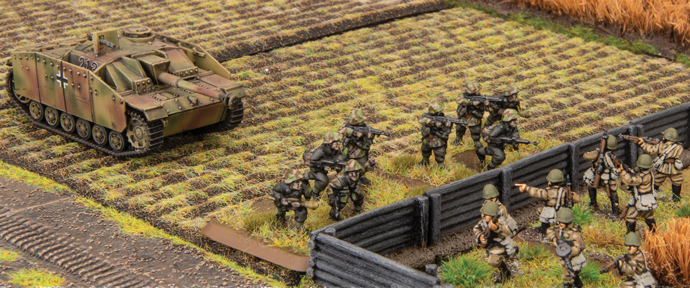
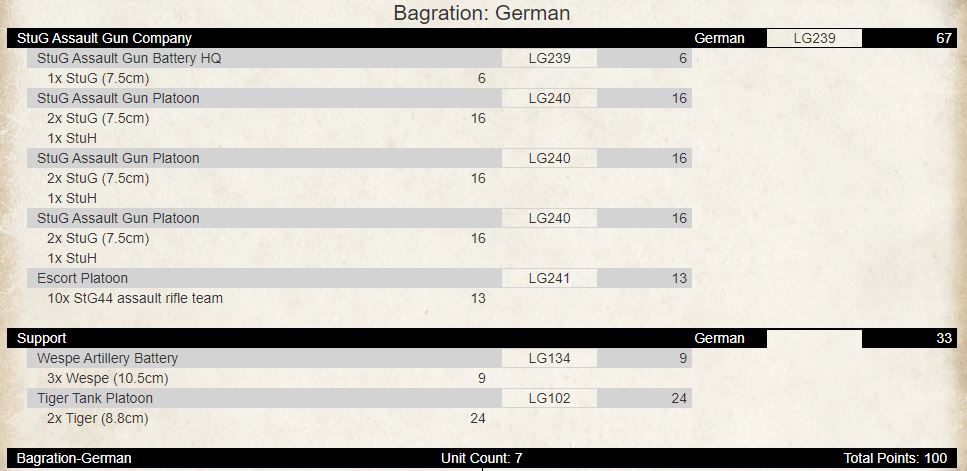
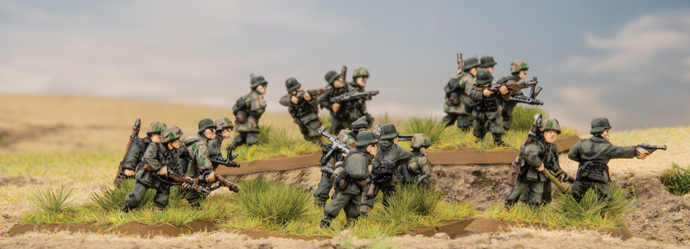
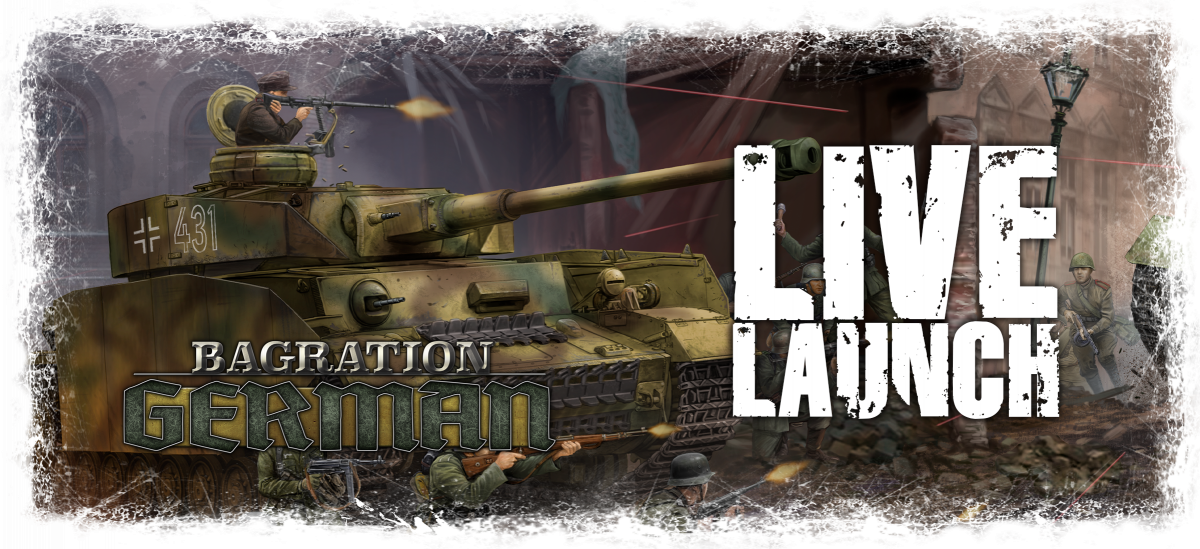
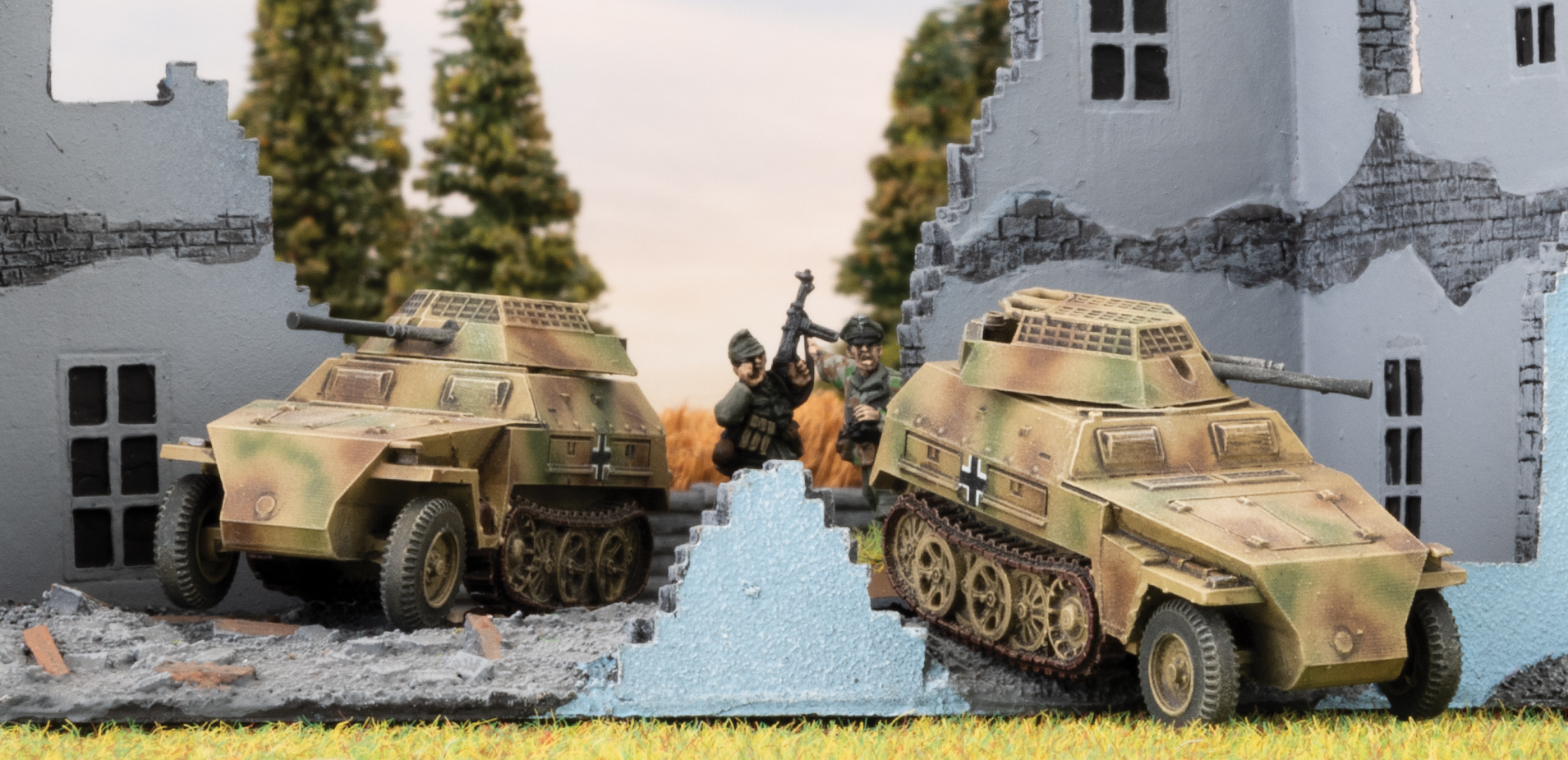
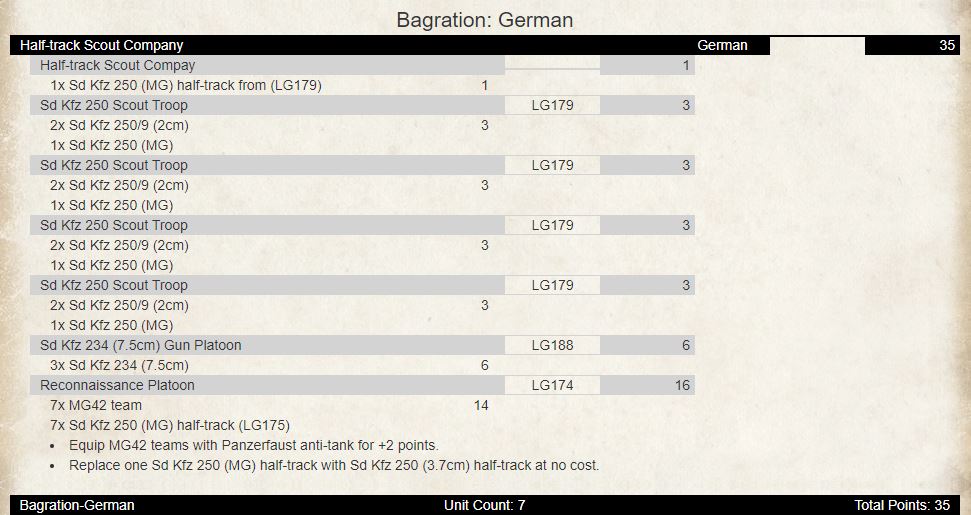
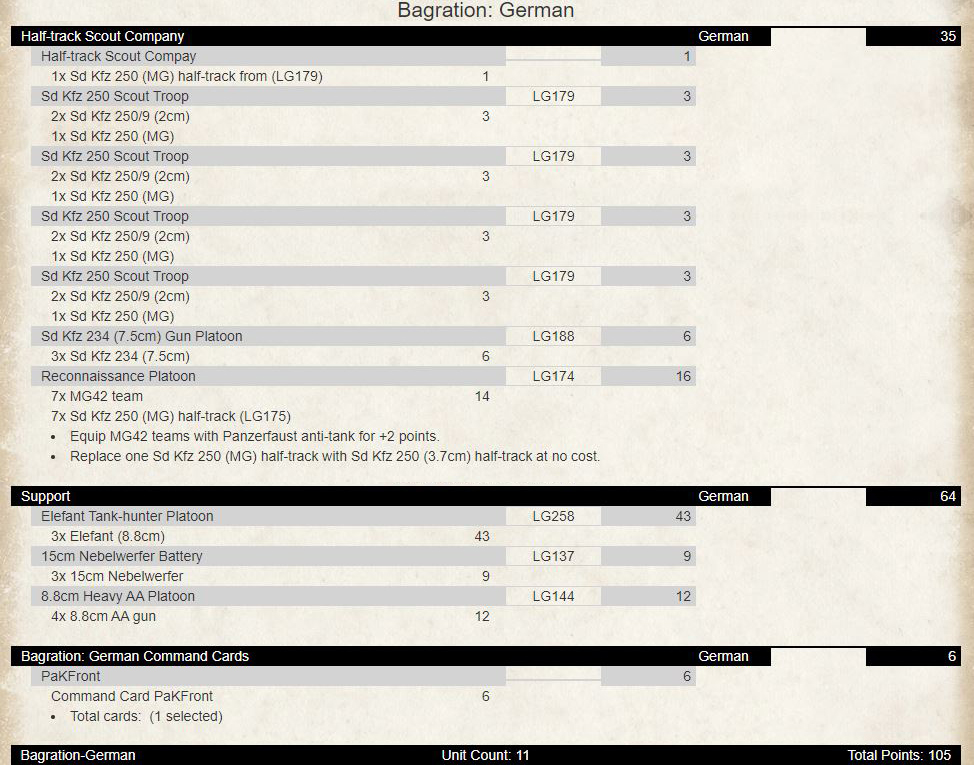

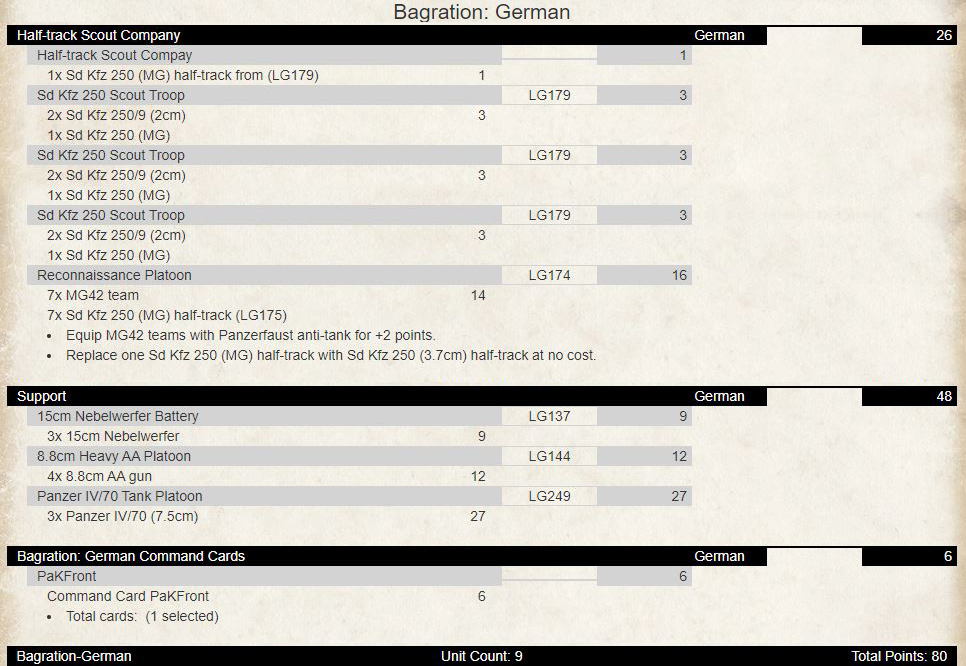
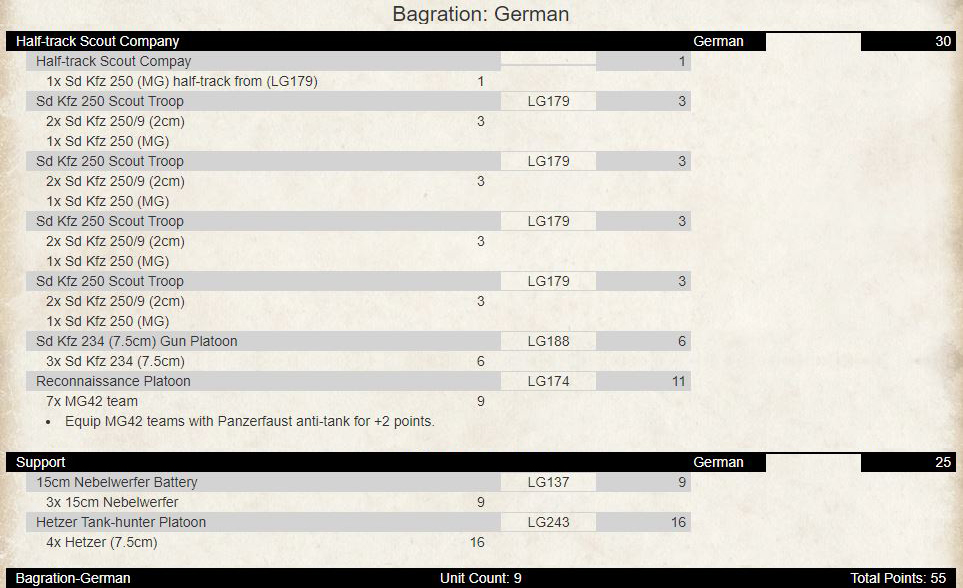
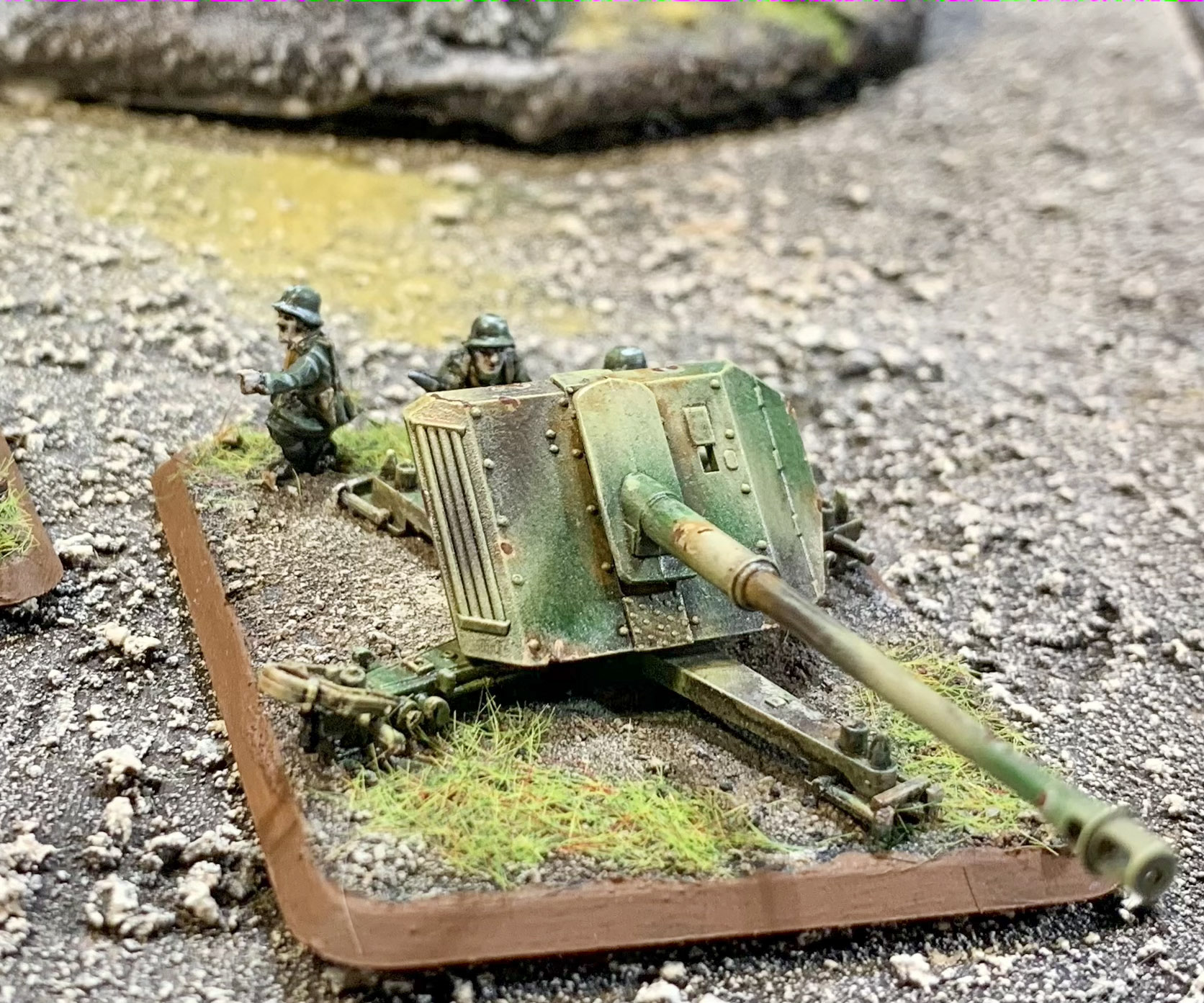
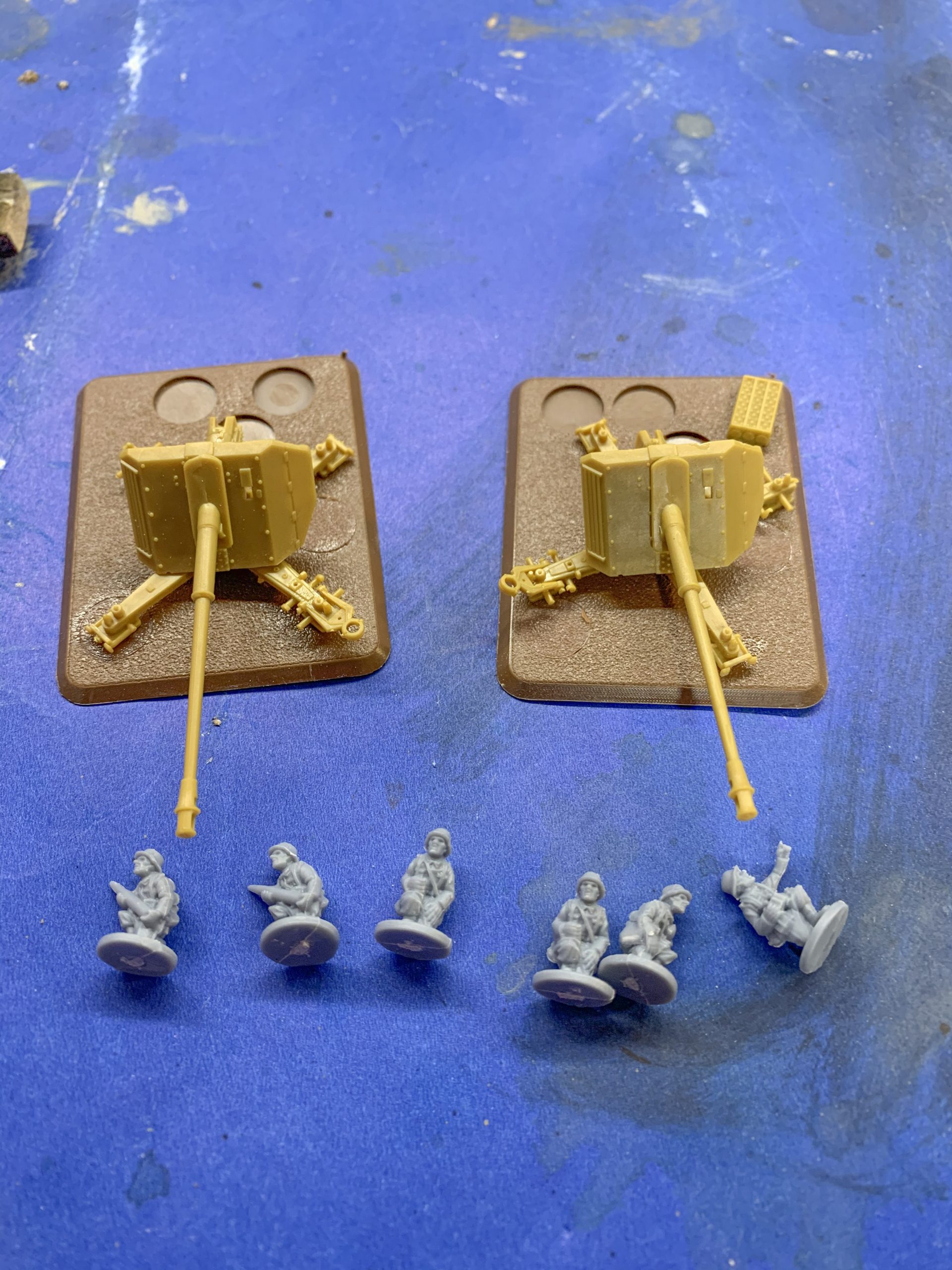

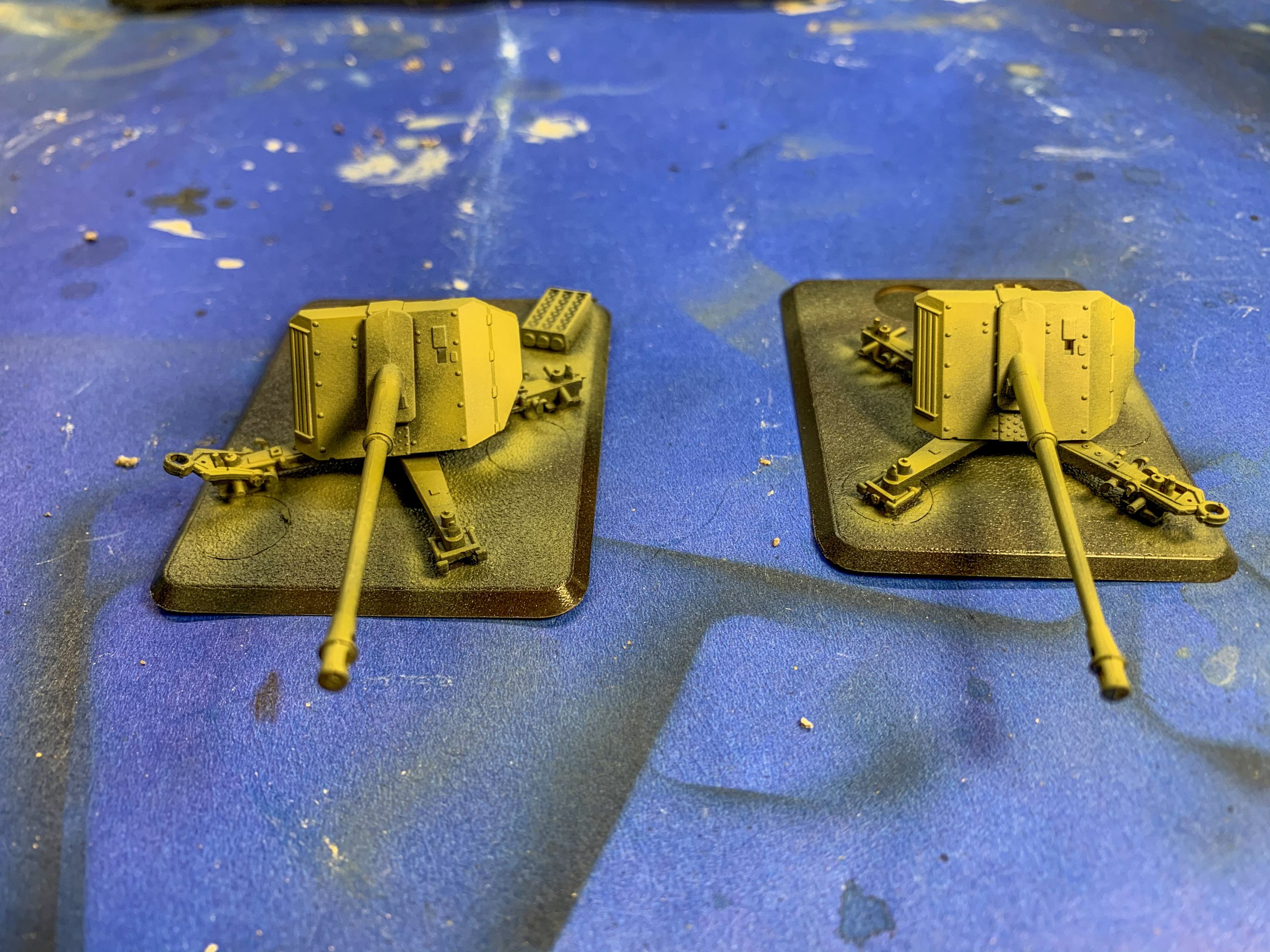

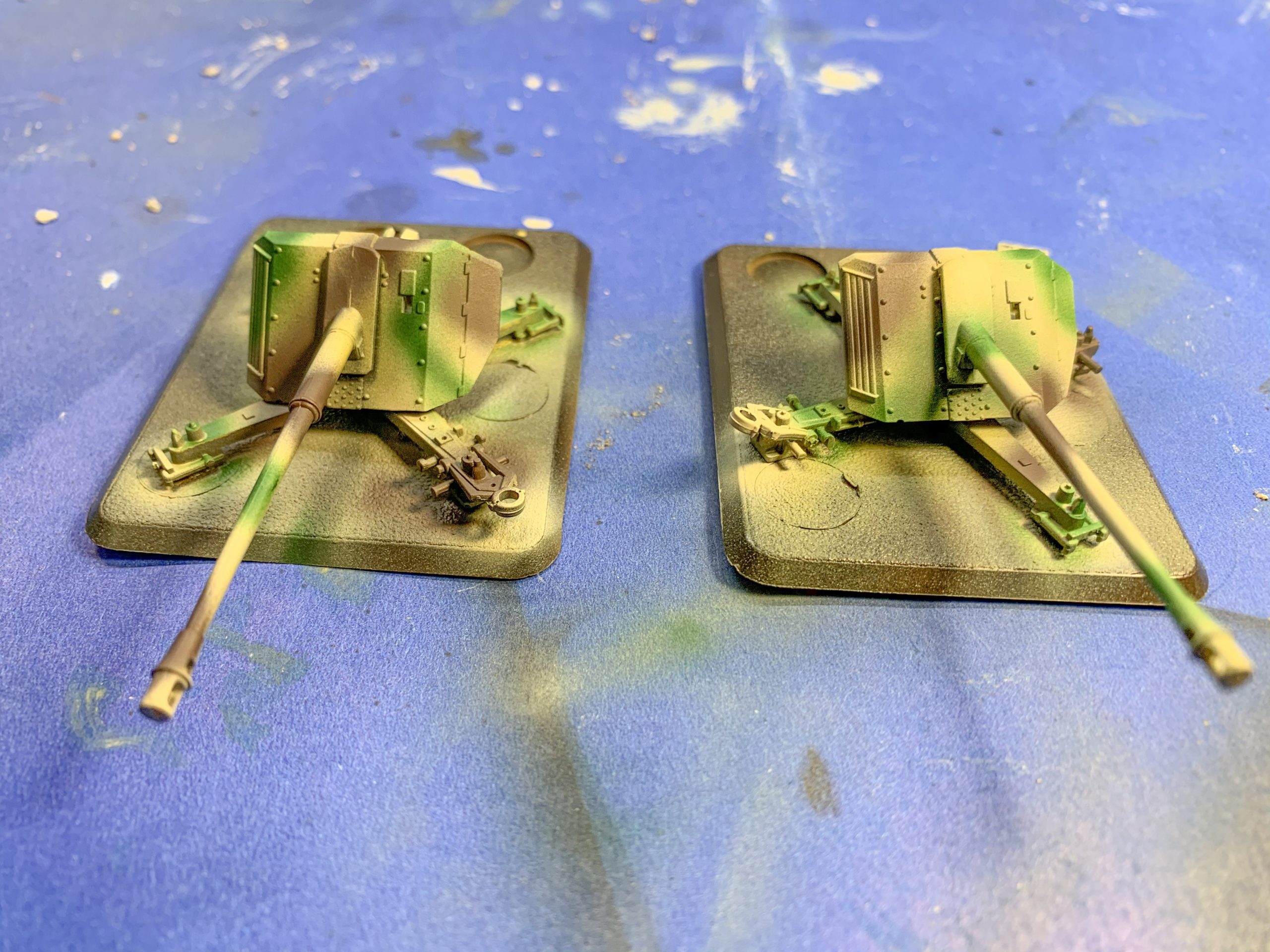
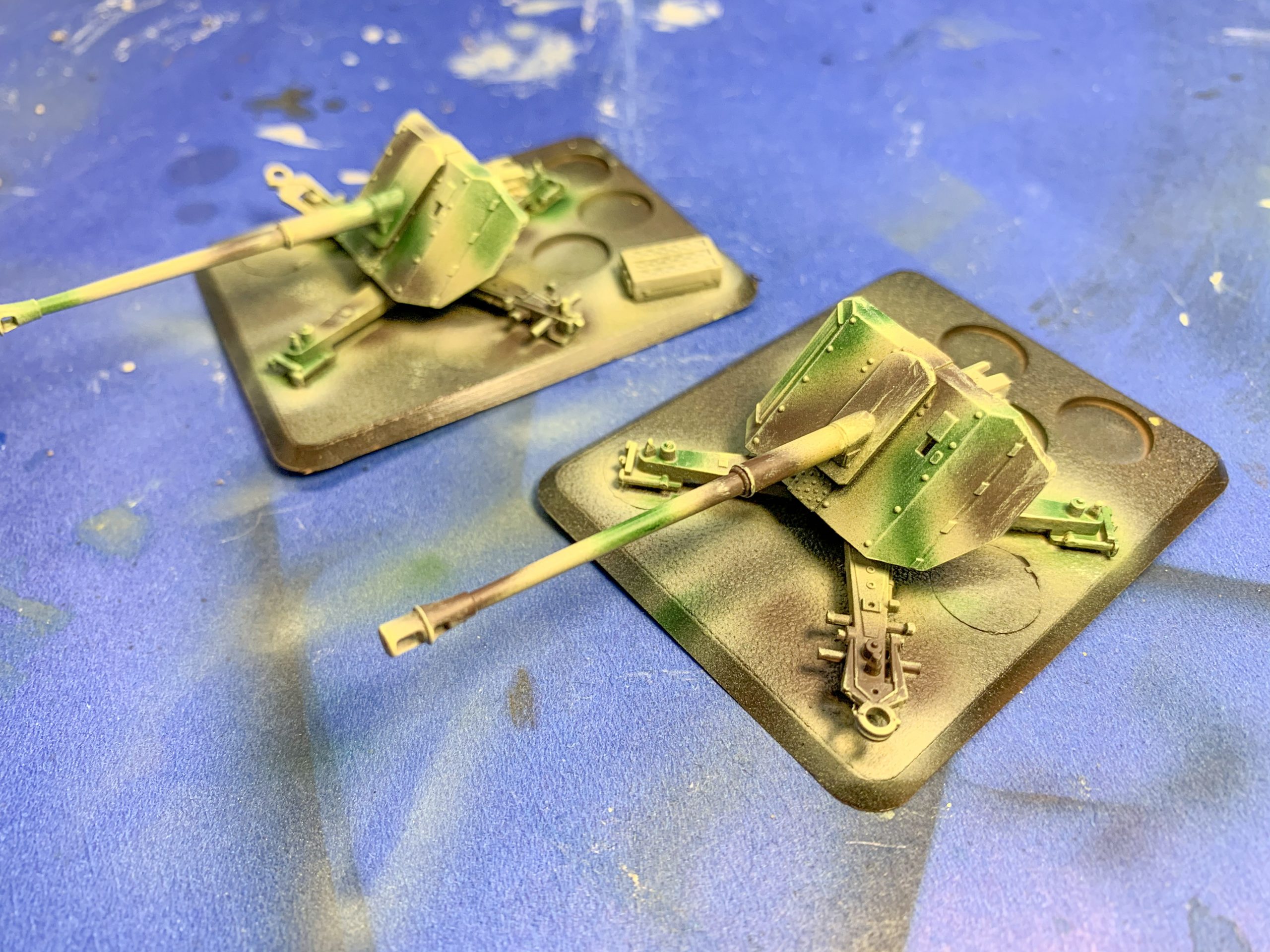
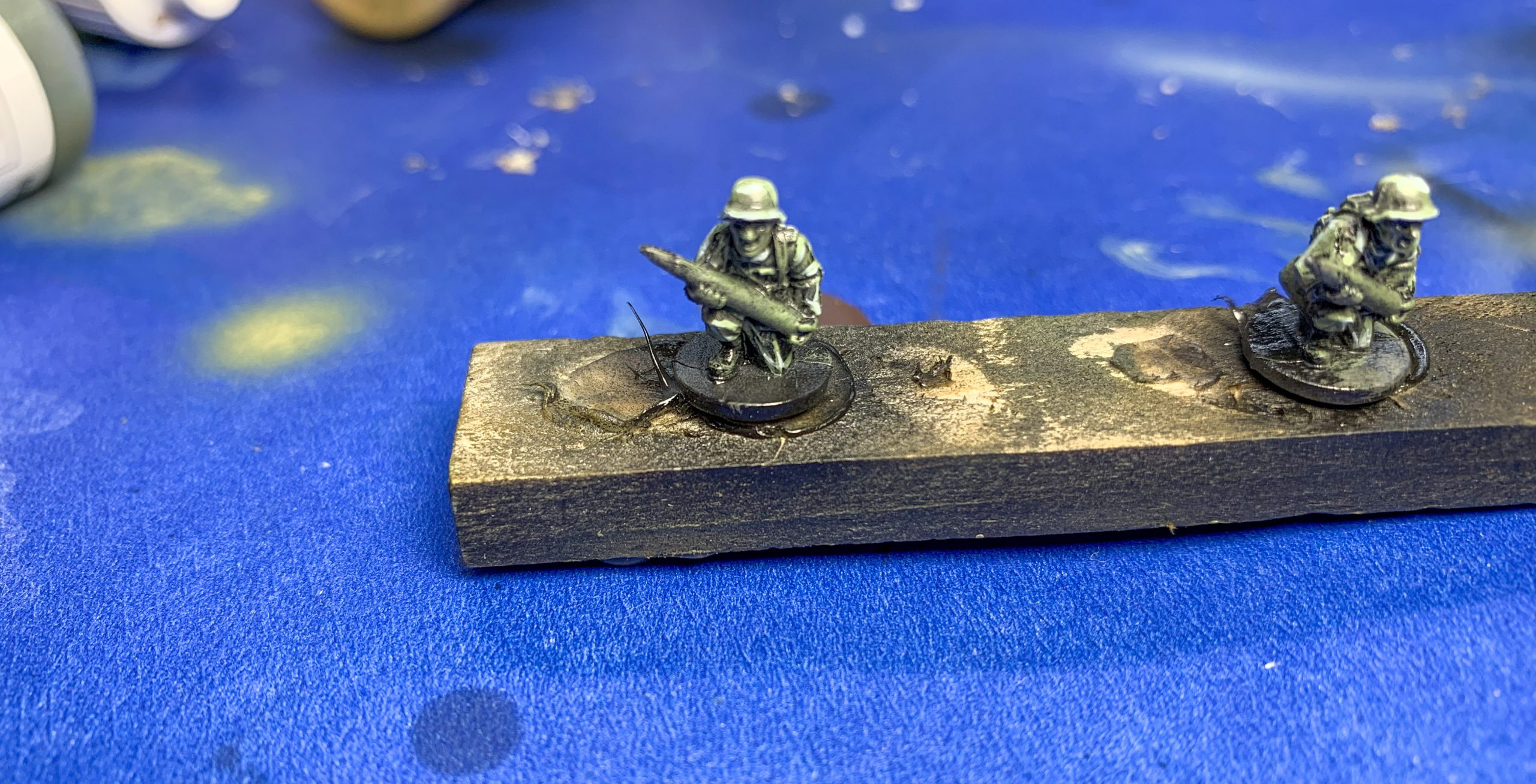
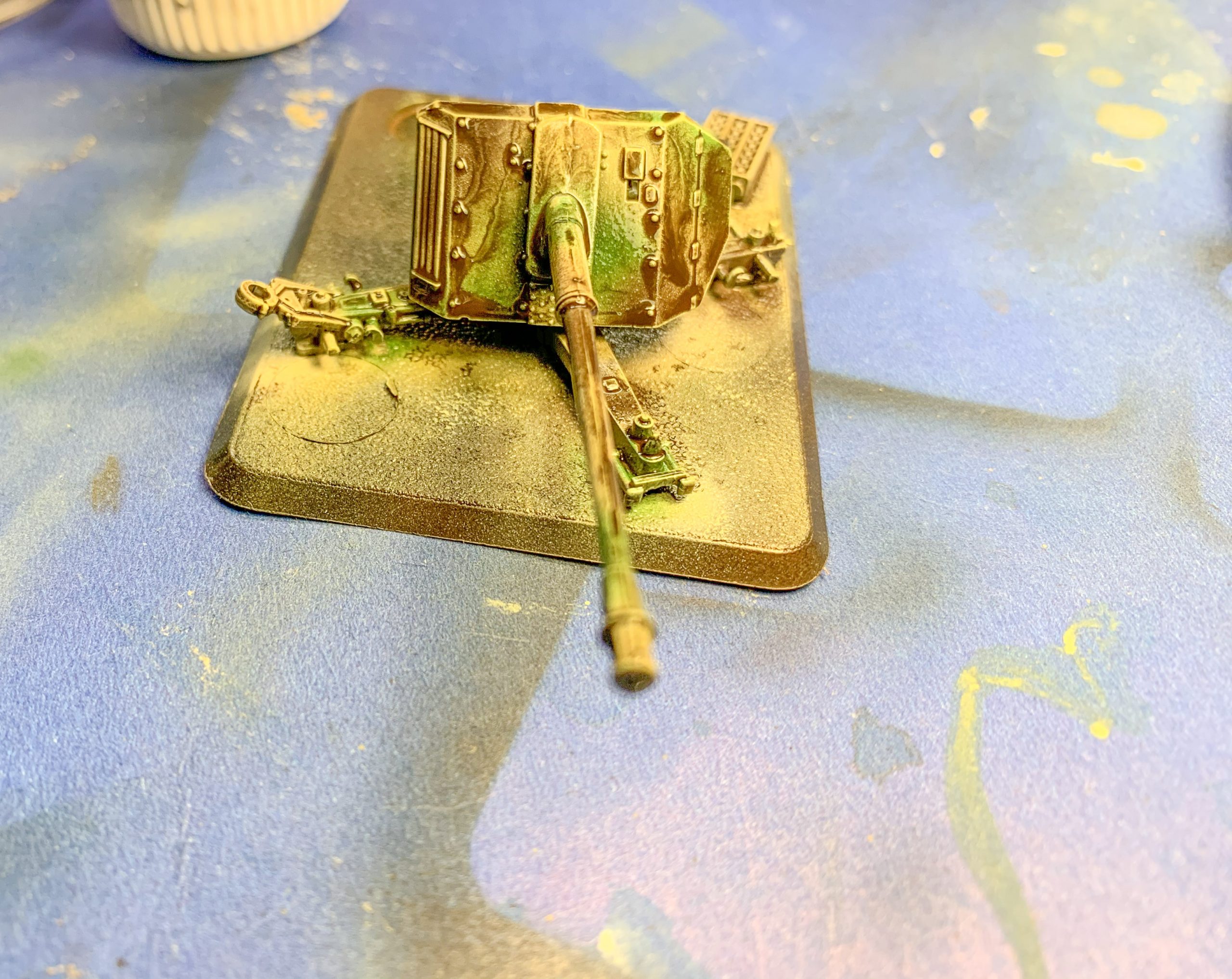

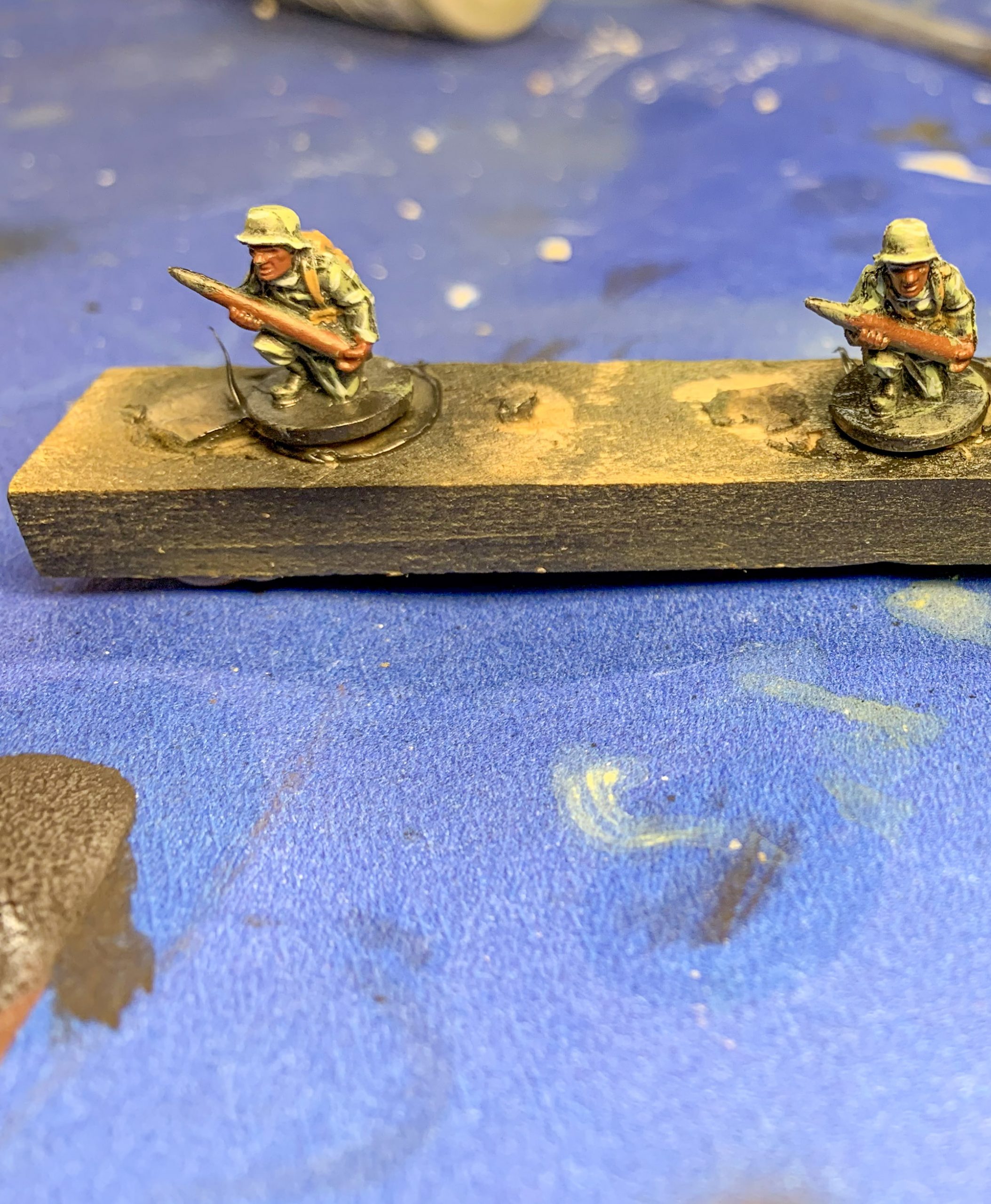
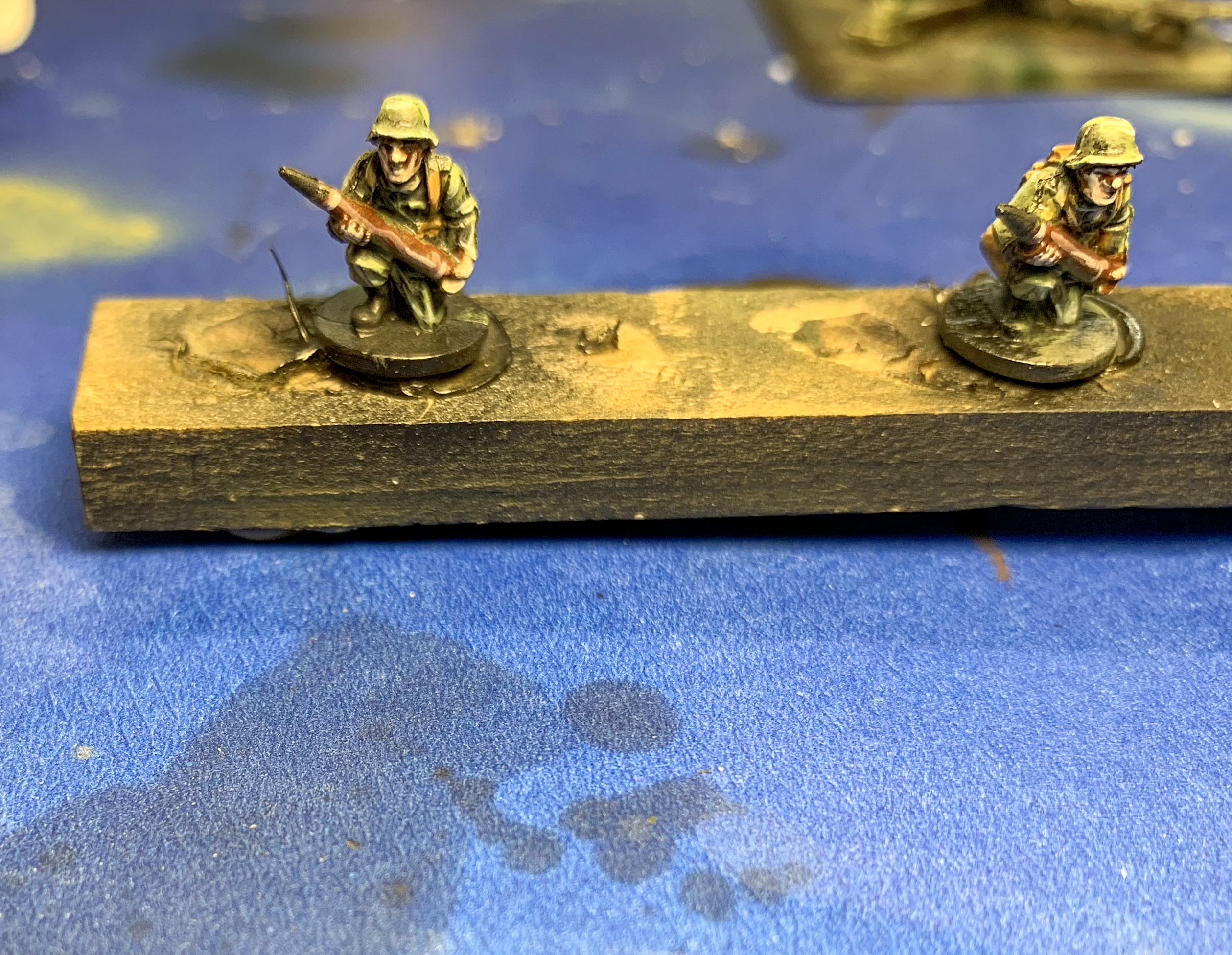
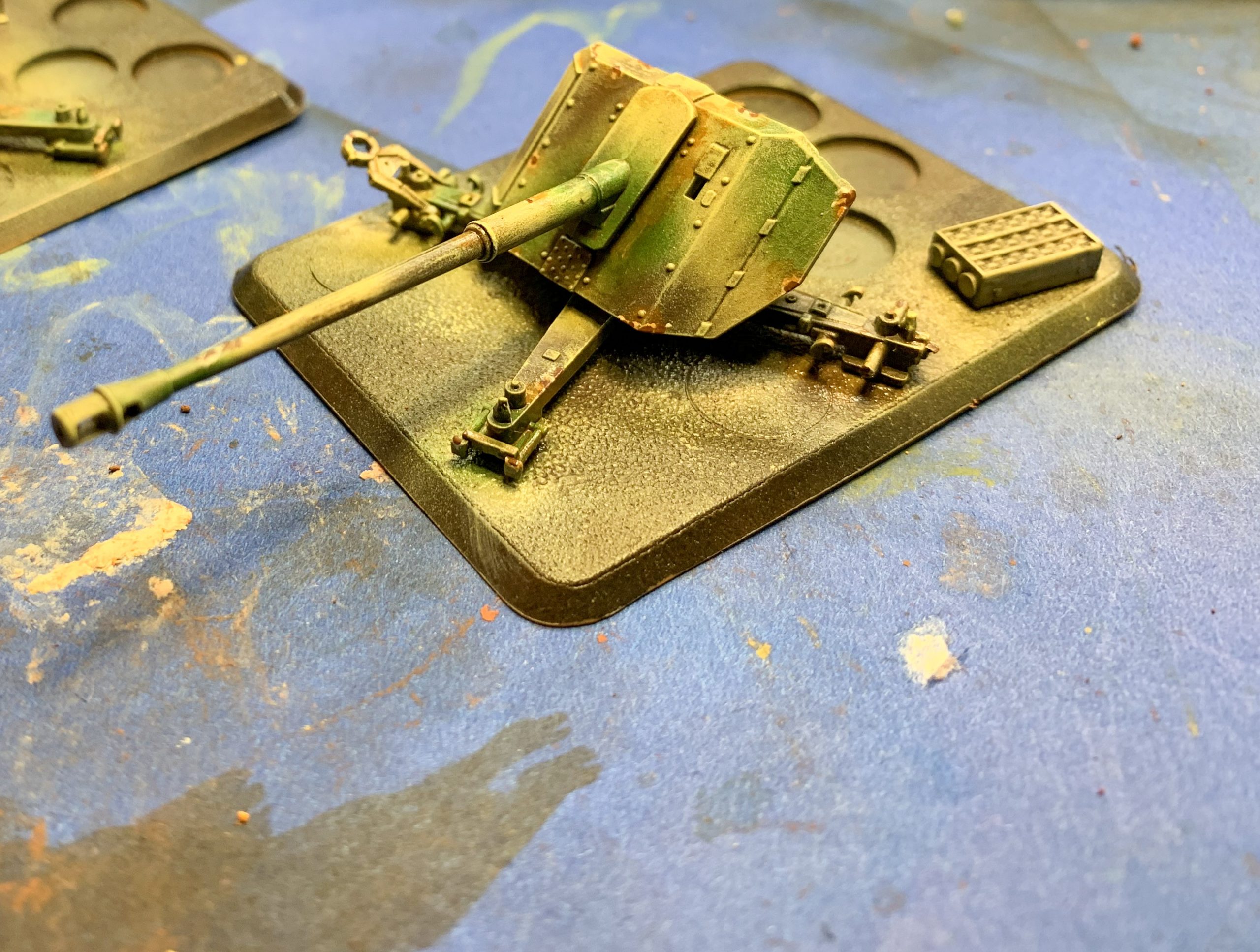
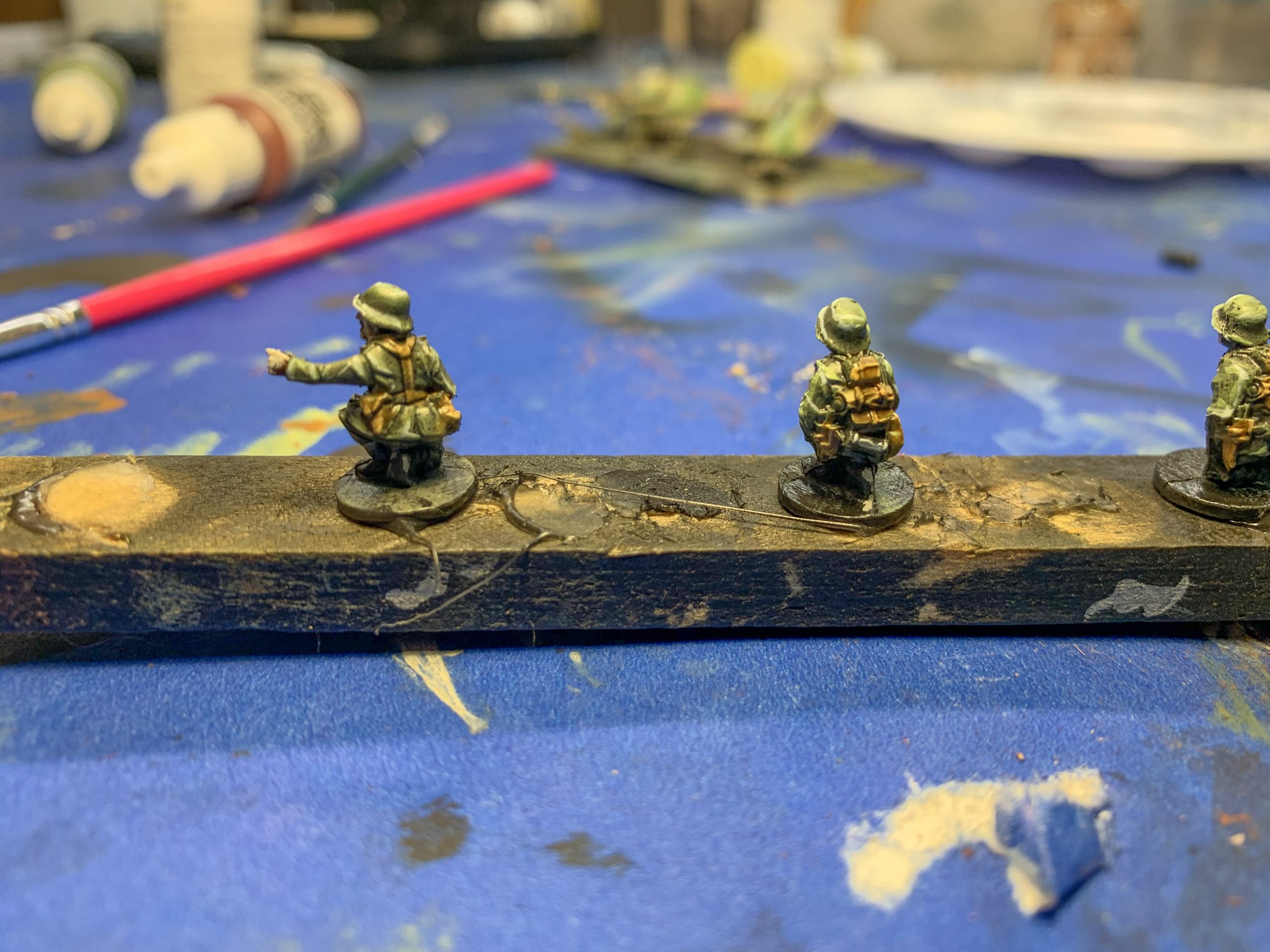
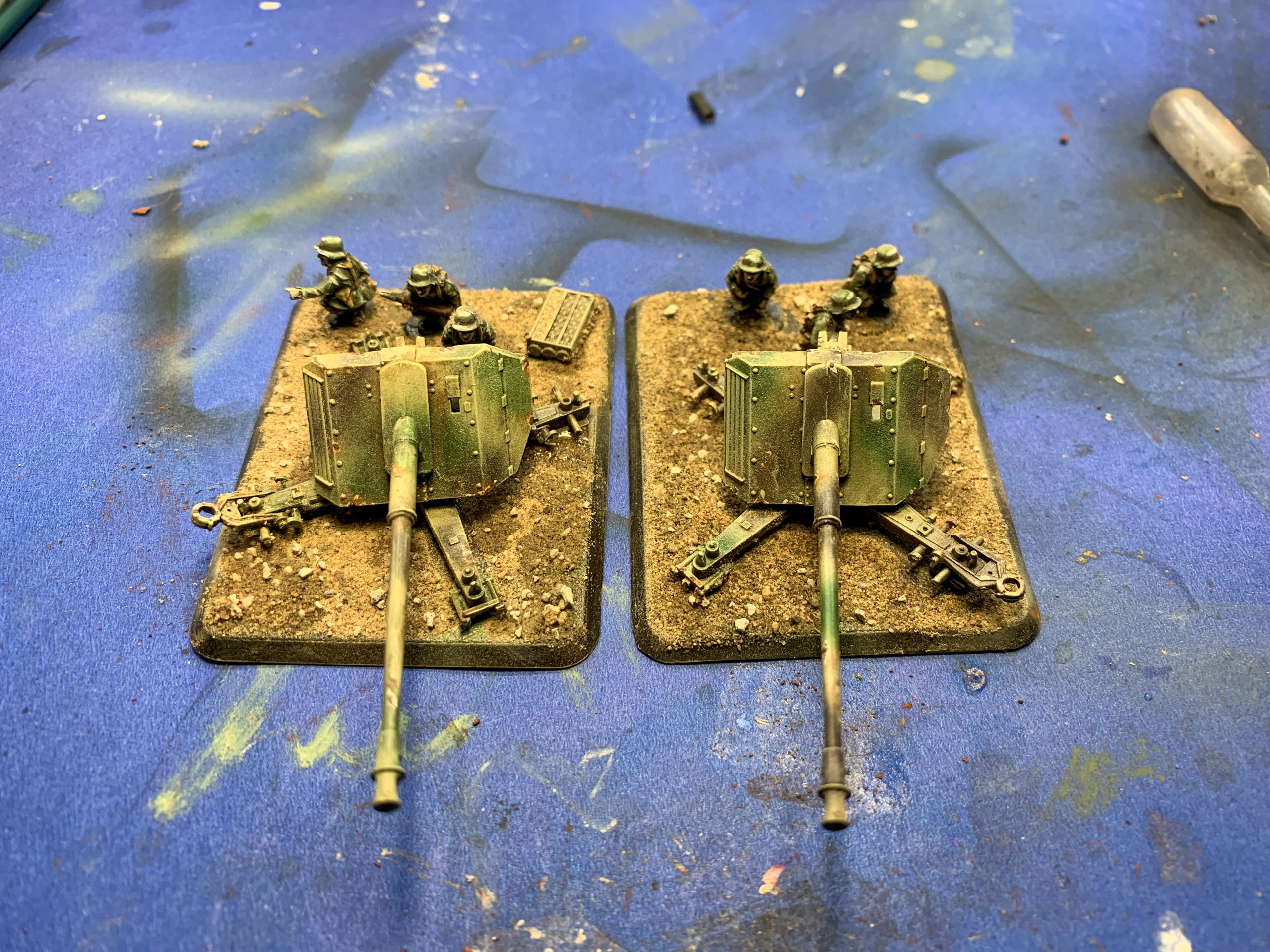
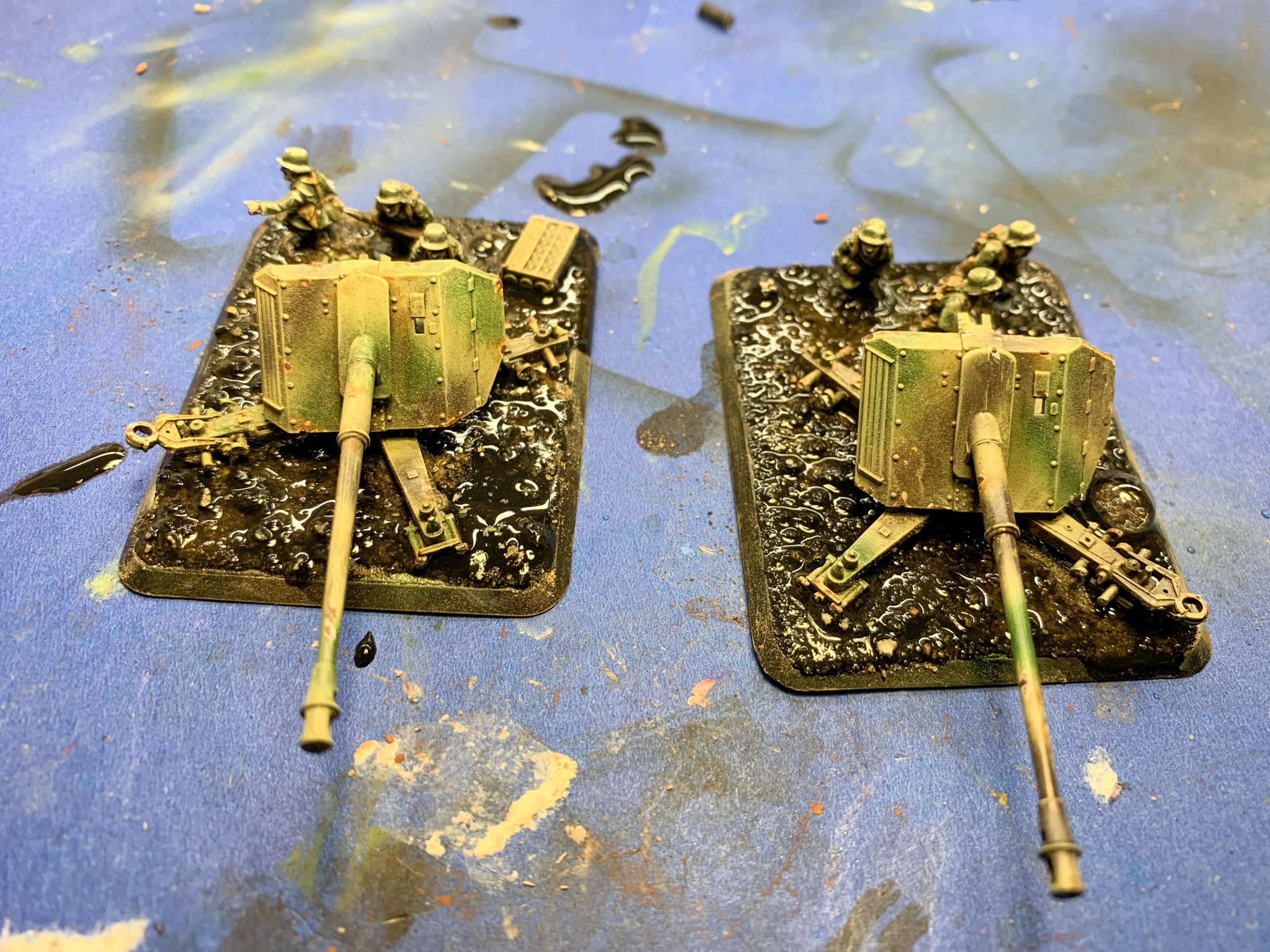
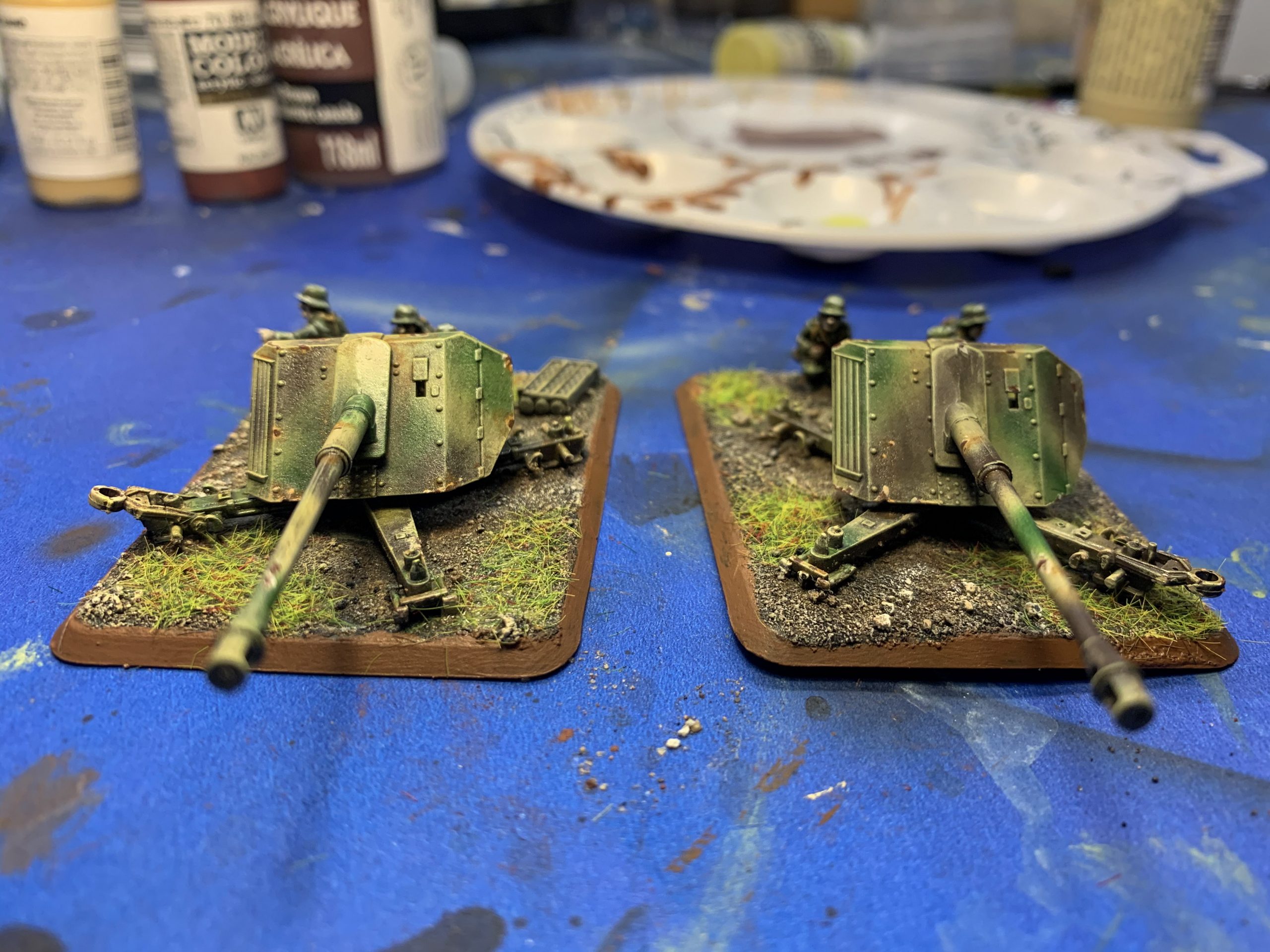
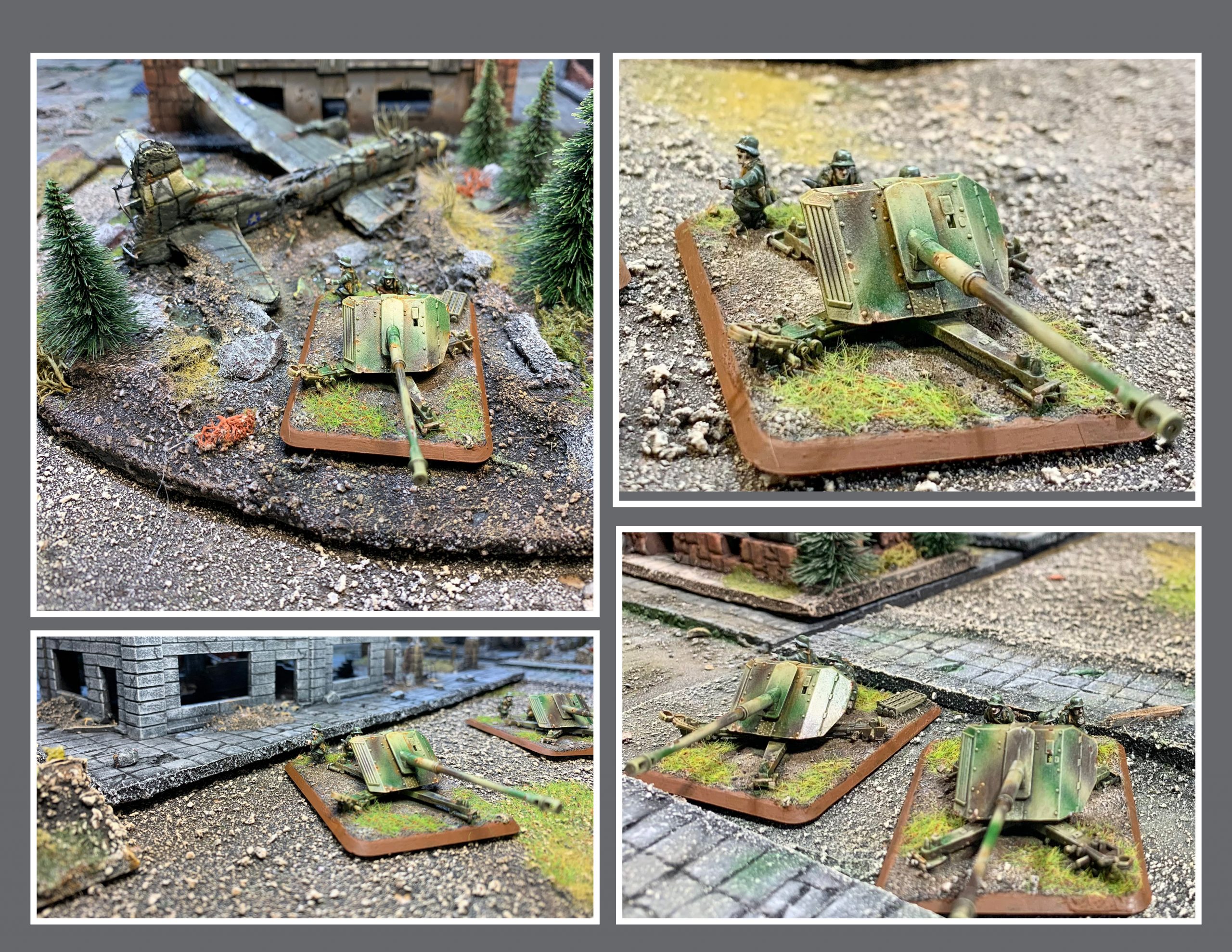
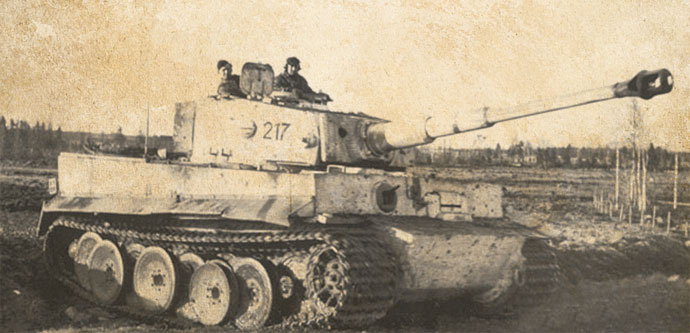
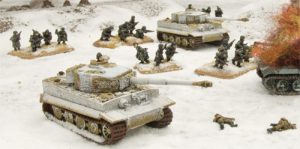 A Brush with Death
A Brush with Death
